Process¶
Research¶
My Google Spreadsheet where I'm storing research, references, receipes, and my observation notes.
Here is my pinterest moodboard for this project.
Here is my Mural Board where I'm storing all my visuals and thoughts.
Testing bio recipes and bio colors¶
For the first two weeks of my final project, I'm focusing on testing gelatin bio plastic recipes I like and experimenting dyeing them with natural dye baths. I'm playing with mold textures, plant, mineral, and insect-based dyes as well as natural color modifiers like baking soda, alum, lemon, and vinegar. My goal for this part of experimentation is to create a personal archive of bio plastics and bio dyes that I like together.
Colors I want to achieve this week:
 Collage of colors I want to achieve this week taken from my Mural Board, from top left to bottom right: Neon green / highlighter yellow, bright orange, black / smokey translucent , bright blue,hot / electric pink, olive green.
Collage of colors I want to achieve this week taken from my Mural Board, from top left to bottom right: Neon green / highlighter yellow, bright orange, black / smokey translucent , bright blue,hot / electric pink, olive green.
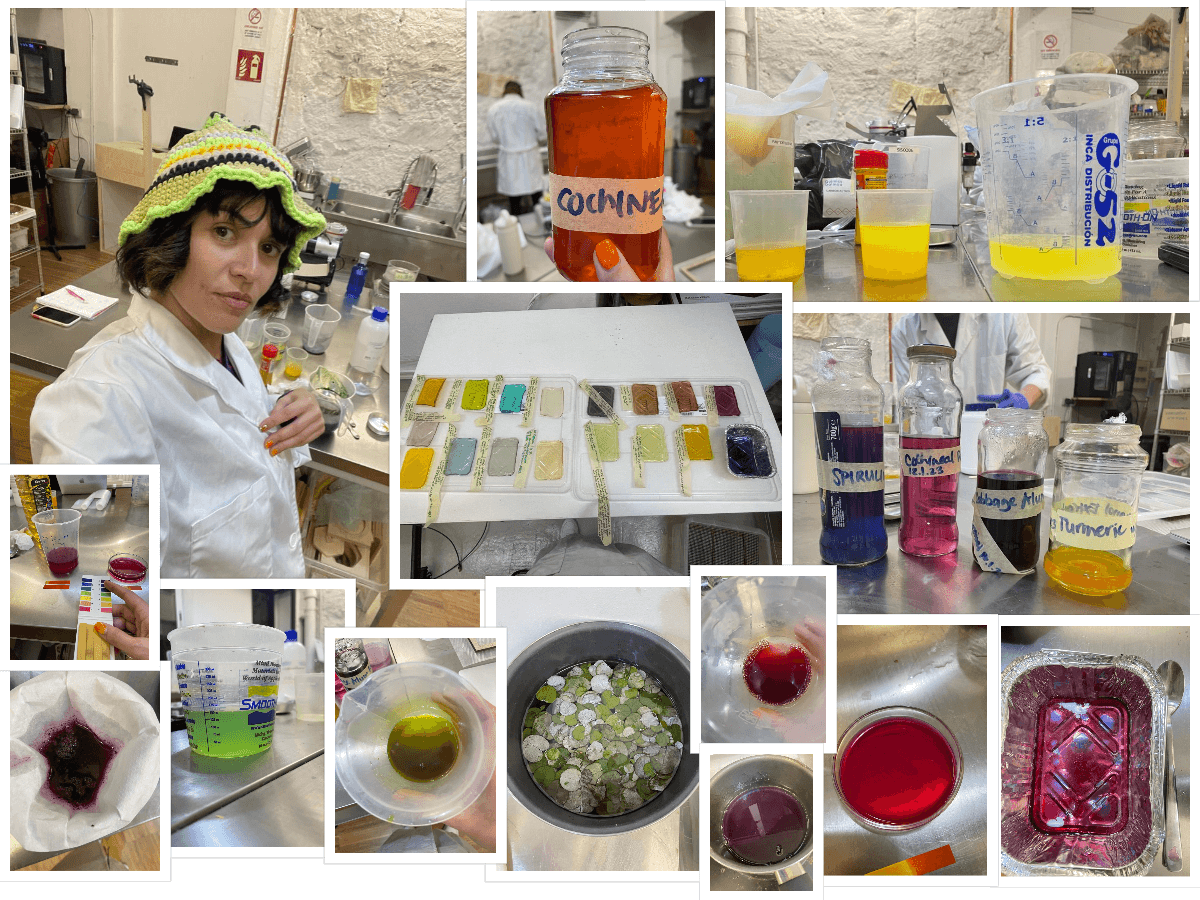 A photo collage of my work these past two weeks. I created and mixed so many dye baths. It was interesting (and frustrating) to see how the dye baths changed once they were heated or once they were casted or once the recipe dried. In the attempt to try and make orange, I ended up with bio plastics that were yellow and brownish pink.
A photo collage of my work these past two weeks. I created and mixed so many dye baths. It was interesting (and frustrating) to see how the dye baths changed once they were heated or once they were casted or once the recipe dried. In the attempt to try and make orange, I ended up with bio plastics that were yellow and brownish pink.
Recipe: Gelatin Bio Plastic¶
* 8.3g Gelatine
* 5.1g Glycerine
* 50ml water
* Molds: 80mm x 120mm x 40mm Aluminum Trays
* Pots and stovetop
* Measuring cups and spoons
* Rubber spatula
* Measure out your ingredients
* Add the water and gelatin together in the pot on no or low heat and mix well
* Turn up heat to about medium to medium high. Add the glycerin and heat mixture until it starts bubbling, stirring constantly
* Remove from heat and let cool until temperature reaches ~40C.
* Pour mixture into a mold.
* Let the material dry in mold for 3-5 days, in cool - moderate temperuature. Turn a fan on low for faster drying. Pulling it out too early will result in curled rigid edges, but too late may cause the material to become too rigid and stick to mold.
Gelatin Bio Plastic Library¶
| Material pic | Material name | polymer / plastier | colorant / scent | volume / size / thickness | properites |
|---|---|---|---|---|---|
 |
Bio Plastic | Gelatin / Glycerine | none / tea tree | 50ml / 85mm x 120 mm / 1.25mm | flexible, strong, curled rigid edges, casting days: 2 |
 |
Bio Plastic | Gelatin / Glycerine | Yellow & Red food coloring / tea tree | 50ml / 85mm x 120 mm / 1.25mm | flexible, strong, curled rigid edges, casting days: 2 |
 |
Bio Plastic | Gelatin / Glycerine | Yellow & Green food coloring / eucalyptus | 50ml / 85mm x 120 mm / 1.25mm | flexible, strong, curled rigid edges, casting days: 2 |
 |
Bio Plastic | Gelatin / Glycerine | Blue food coloring / tea tree | 50ml / 85mm x 120 mm / 1.25mm | flexible, strong, curled rigid edges, casting days: 2 |
 { { |
Bio Plastic | Gelatin / Glycerine | 1g Cochineal / none | 50ml / 85mm x 120 mm / 1.25mm | flexible, strong, casting days: 4 |
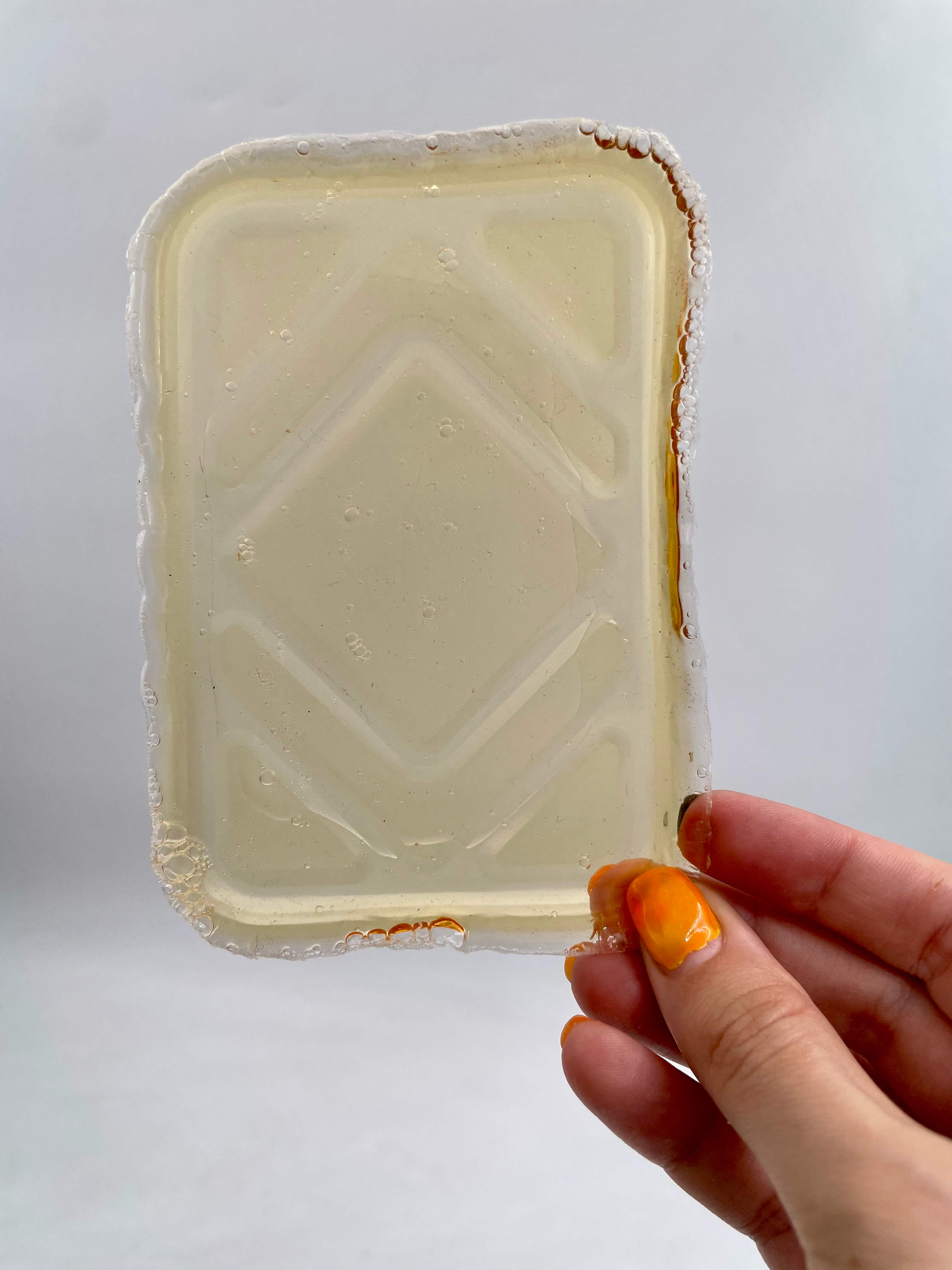 |
Bio Plastic | Gelatin / Glycerine | turmeric & lemon strained / none | 50ml / 85mm x 120 mm / 1.25mm | flexible, strong, casting days: 4 |
 |
Bio Plastic | Gelatin / Glycerine | turmermic & lemon unstrained / none | 50ml / 85mm x 120 mm / 1.25mm | flexible, strong, casting days: 4 |
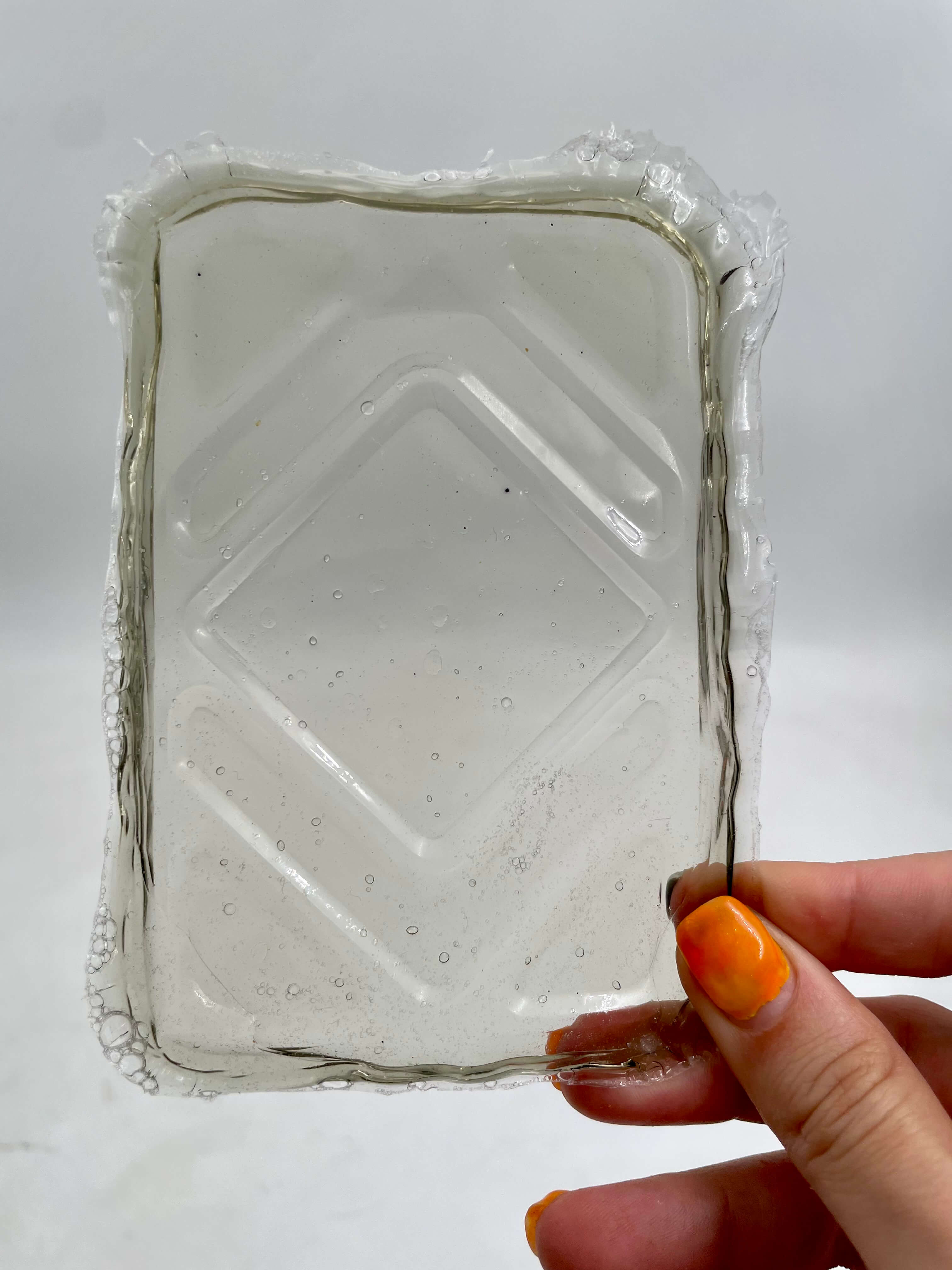 |
Bio Plastic | Gelatin / Glycerine | spirulina / none | 50ml / 85mm x 120 mm / 1.25mml | flexible, strong, casting days: 4 |
 |
Bio Plastic | Gelatin / Glycerine | spirulina / none | 50ml / 85mm x 120 mm / 1.25mm | flexible, strong, added spirulina after cooking, casting days: 4 |
 |
Bio Plastic | Gelatin / Glycerine | activated carbon / none | 50ml / 85mm x 120 mm / 1.25mm | flexible, strong, slightly curled edge, casting days: 3 |
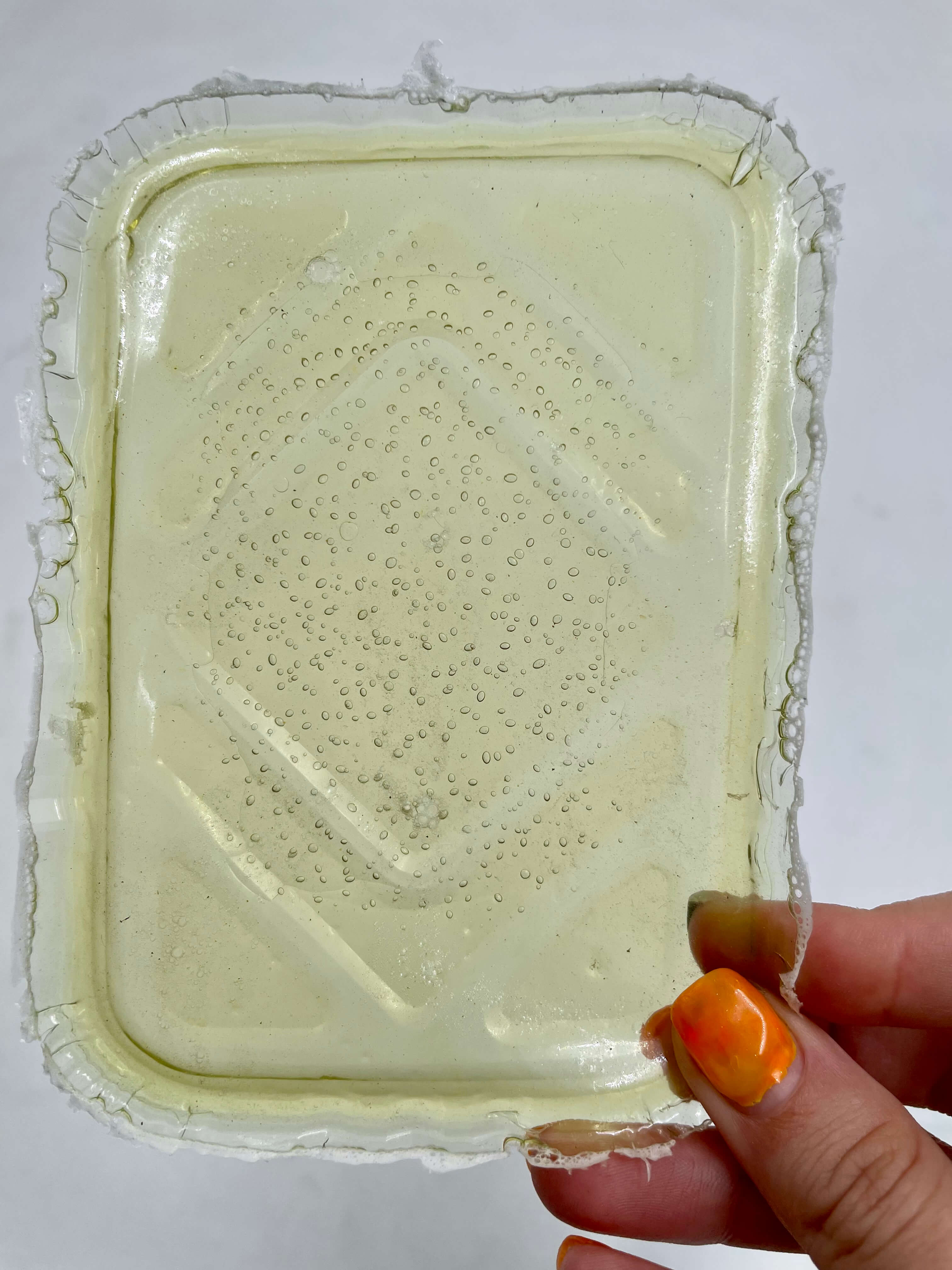 |
Bio Plastic | Gelatin / Glycerine | turmeric & spirulina / none | 50ml / 85mm x 120 mm / 1.25mm | flexible, strong, casting days: 3 |
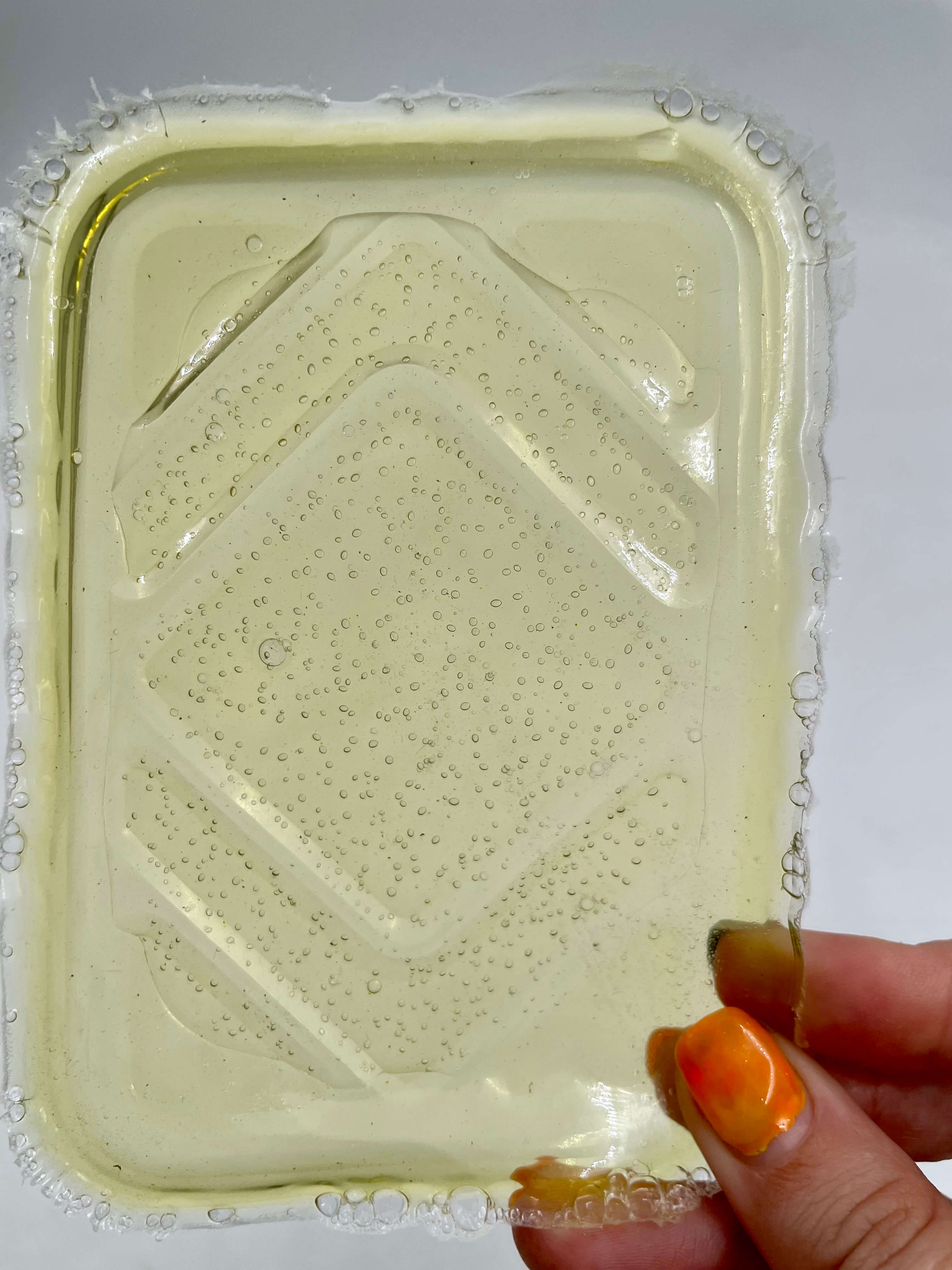 |
Bio Plastic | Gelatin / Glycerine | turmeric & spirulina / none | 50ml / 85mm x 120 mm / 1.25mm | more flexible than 1st, strong, dye bath added once off heat, casting days: 3 |
 |
Bio Plastic | Gelatin / Glycerine | onion skin / none | 50ml / 85mm x 120 mm / 1.25mm | flexible, strong, slightly curled edge, casting days: 3 |
 |
Bio Plastic | Gelatin / Glycerine | onion skin & cochineal 3g / eucalyptus | 50ml / 85mm x 120 mm / 1.25mm | flexible, strong, slightly curled edge, casting days: 3 |
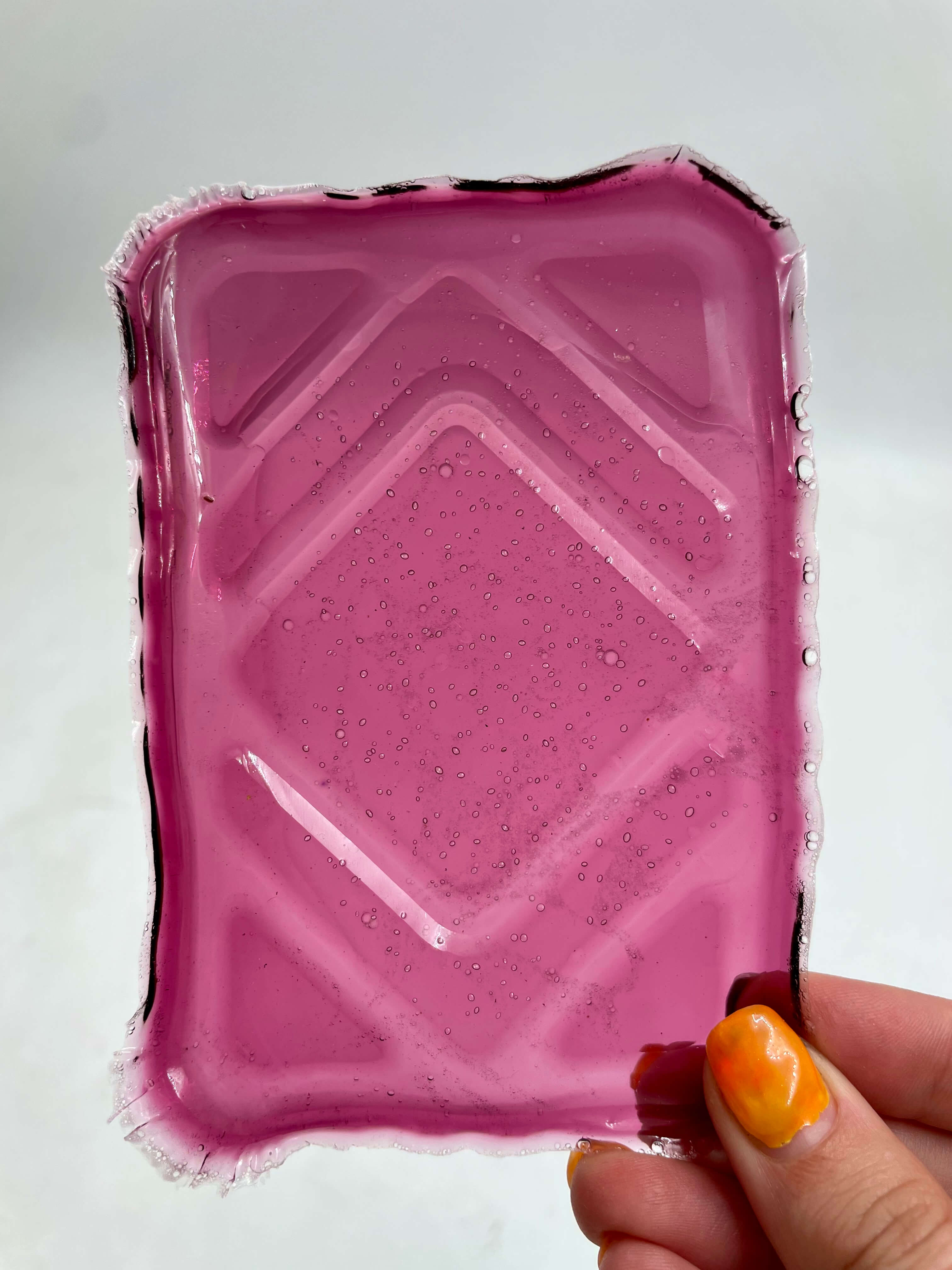 |
Bio Plastic | Gelatin / Glycerine | cochineal 3g / eucalyptus | 50ml / 85mm x 120 mm / 1.25mm | flexible but more rigid, strong, slightly curled edge, casting days: 3 |
 |
Bio Plastic | Gelatin / Glycerine | cochineal 3g & spirulina / none | 50ml / 85mm x 120 mm / 1.25mm | flexible but more rigid, strong, slightly curled edge, casting days: 3 |
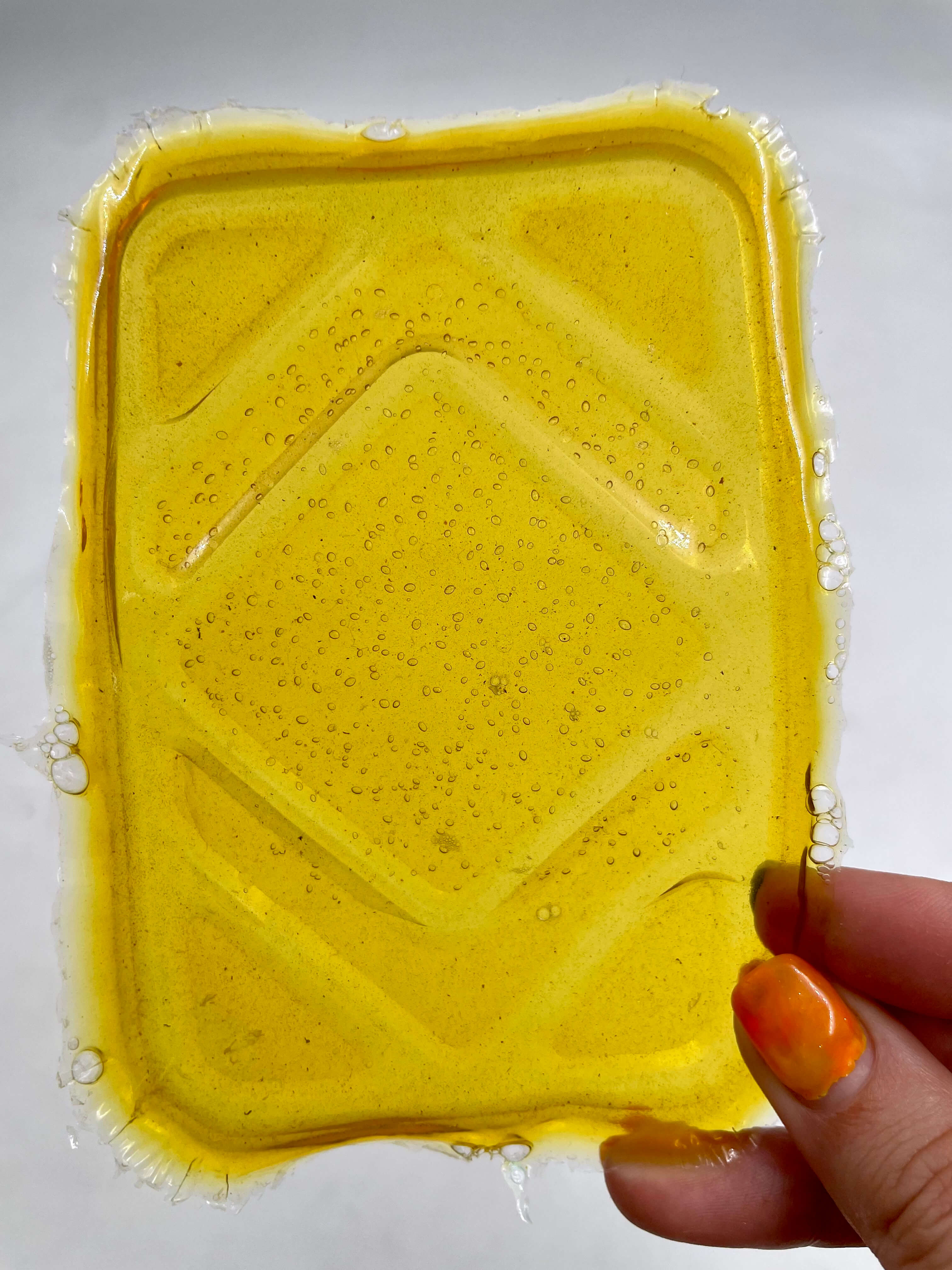 |
Bio Plastic | Gelatin / Glycerine | turmeric & cochineal 3g / none | 50ml / 85mm x 120 mm / 1.25mm | flexible but more rigid, strong, slightly curled edge, casting days: 3 |
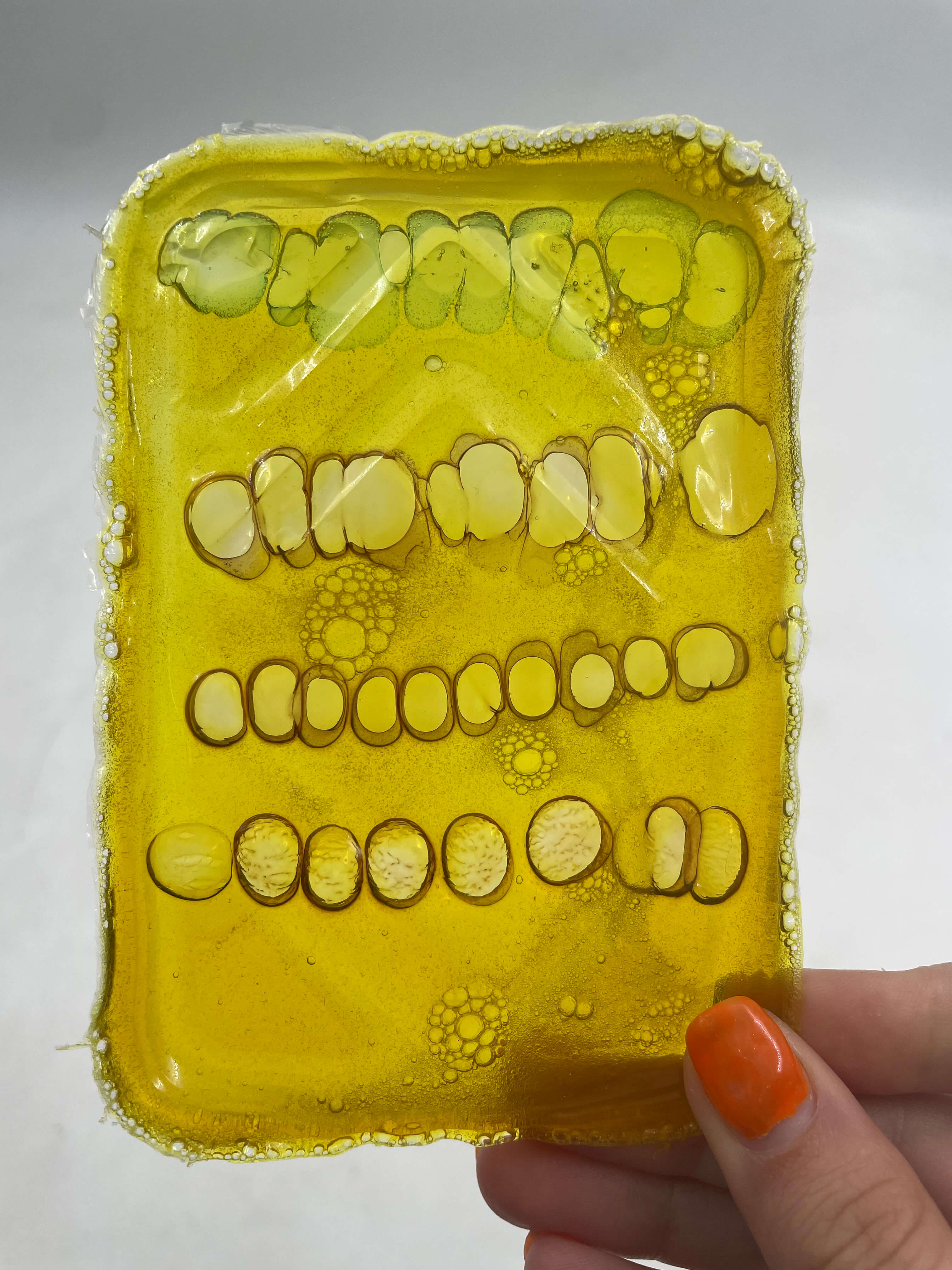 |
Bio Plastic Foam Test | Gelatin / Glycerine | turmeric ethanol extract + drops of spirulina, cabbage & cochineal / none | 50ml / 85mm x 120 mm / 2mm | rigid, curled edge, casting days: 2, drops created indented texture |
 |
Bio Resin | Gelatin / Glycerine | pure cabbage w/ alum + drops of spirulina / none | 50ml / 85mm x 120 mm / 1.9mm | rigid, breakable, slightly curled edge, casting days: 1, drops created indented texture |
 |
Bio Silicone | Gelatin / Glycerine | cochineal (3g) + cabbage + vinegar / none | 50ml / 85mm x 120 mm / 2.5mm | flexible, jelly, slightly curled edge, casting days: 5 |
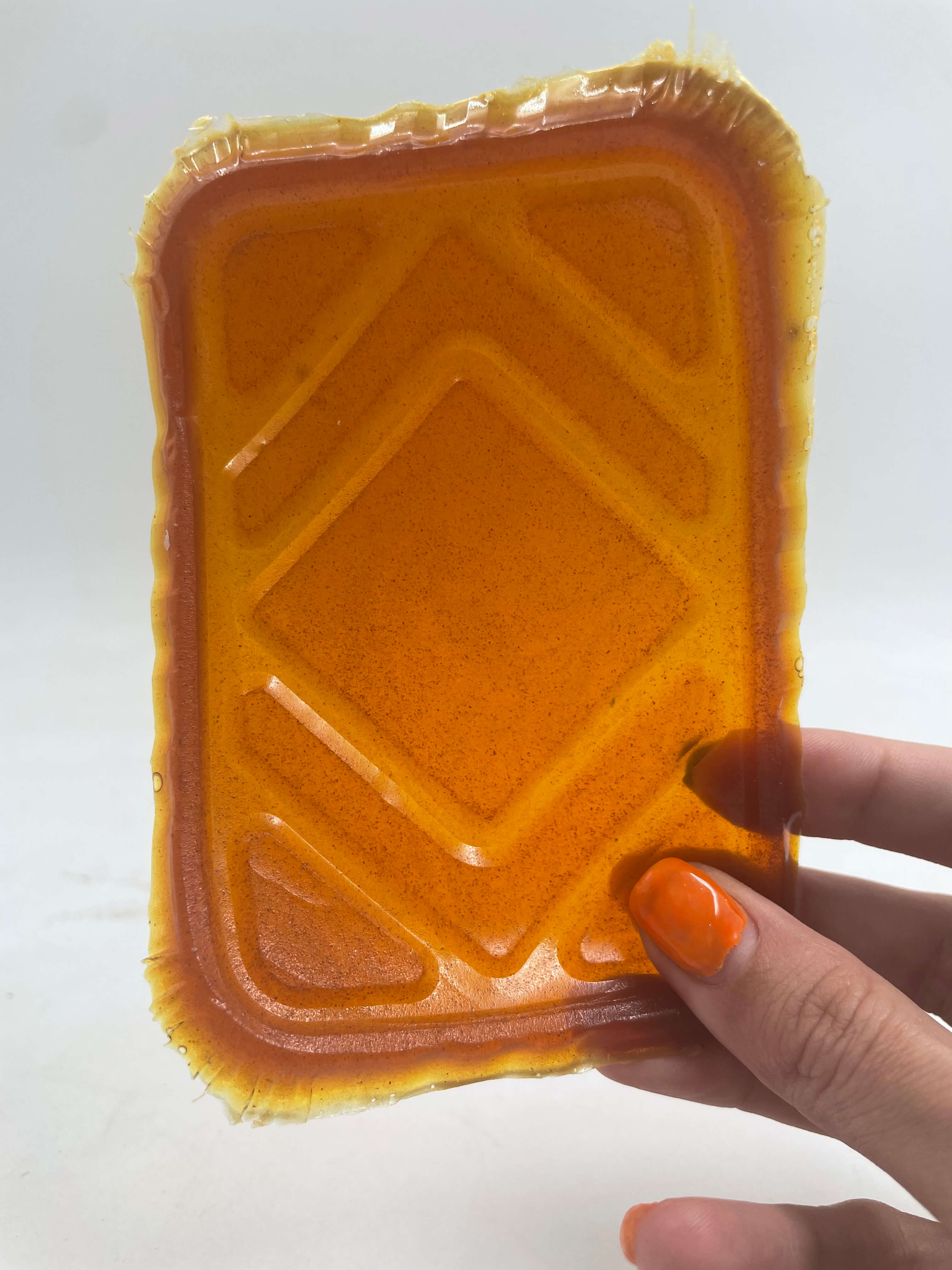 |
Bio Silicone | Gelatin / Glycerine | cochineal (3g) + vinegar + turmeric powder / none | 50ml / 85mm x 120 mm / 2.5mm | flexible, jelly, casting days: 5 |
 |
Bio Plastic | Gelatin / Glycerine | pure cabbage w/ alum + vinegar / lavendar | 50ml / 85mm x 120 mm / 1.25mm | flexible but more rigid, strong, casting days: 5 |
 |
Bio Plastic | Gelatin / Glycerine | eucalyptus w/ alum / none | 50ml / 85mm x 120 mm / 1.4mm | more rigid, curled edges, casting days: 2 |
 |
Bio Plastic | Gelatin / Glycerine | turmeric ethanol + spirulina / lavendar oil | 50ml / 85mm x 120 mm / 1.2mm | flexible, casting days: 5 |
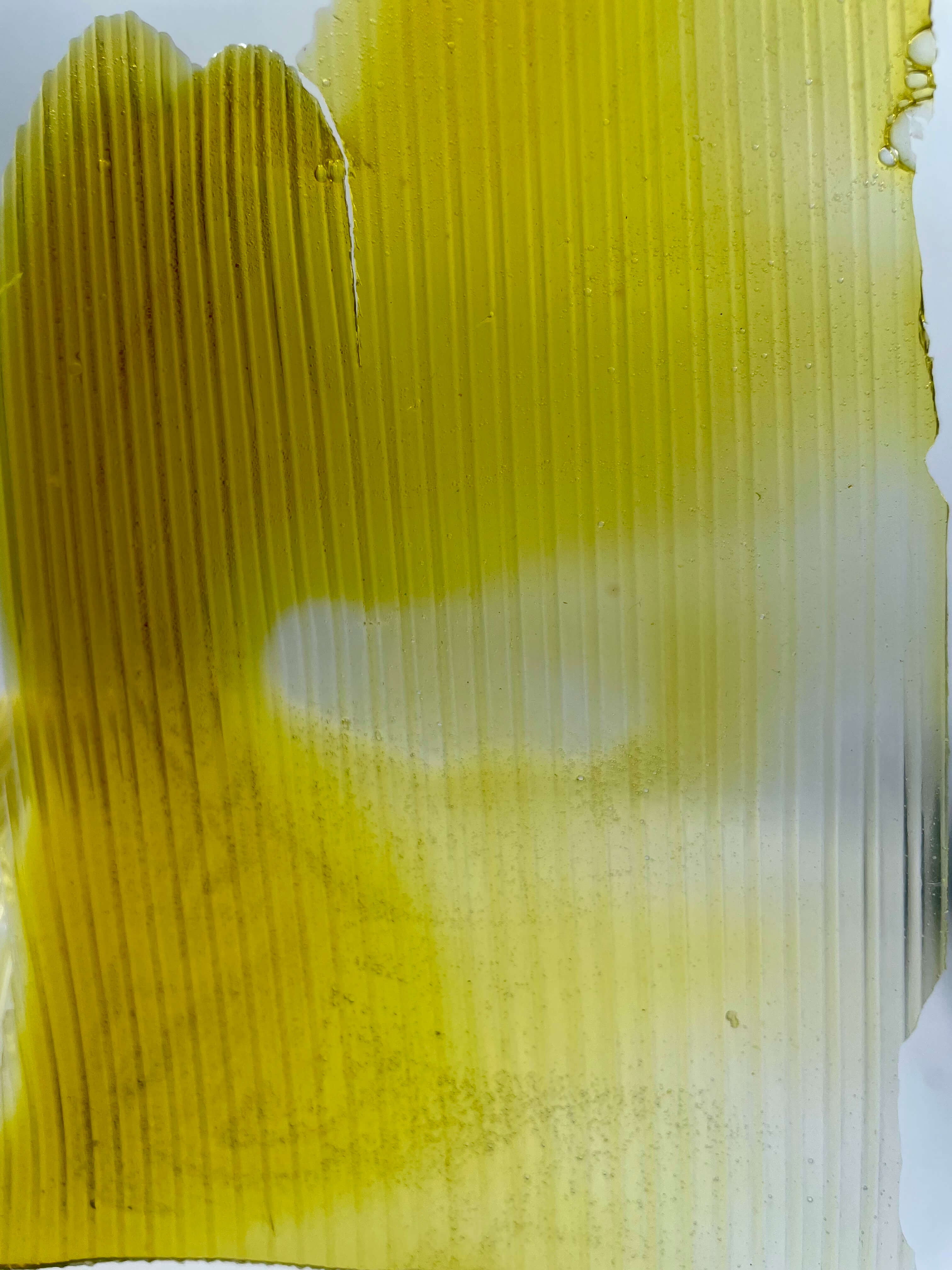 |
Bio Plastic Film | Gelatin / Glycerine | turmeric ethanol + spirulina / lavendar oil | 50ml / 85mm x 120 mm / 0.5 - 0.9mm | flexible, casting days: 3 |
 |
Bio Plastic | Gelatin / Glycerine | turmeric ethanol + cabbage w/ alum / lavendar oil | 50ml / 85mm x 120 mm / 1.3mm | flexible, weak, casting days: 5 |
BioChrome Formulas¶
Baby Pink¶

* 1g cochineal pigment
* ~3 liters water
* Dissolve cochineal pigment in warm water.
* Remove from heat as soon as the color changes, or keep on heat longer for darker color.
* Strain through coffee filter into a bottle or pot.
* Once strained pour out the amount in ml you need to replace water in your bioplastic recipe
Baby Yellow¶

* Turmeric powder
* 50ml water
* 7g lemon juice
* Mix turmeric in a little bit of water until it becomes a paste.
* Add more water to the paste, enough for your recipe.
* Strain dyebath through coffee filter
* Add lemon juice to strained dye bath.
* Dye bath will replace water when you make your bio plastic recipe.
Bright Yellow¶

* Turmeric powder
* 50ml water
* 7g lemon juice
* Mix turmeric in a little bit of water until it becomes a paste.
* Add more water to the paste, enough for your recipe.
* Add lemon juice to dye bath.
* Dye bath will replace water when you make your bio plastic recipe.
Baby Blue¶

* 1 table spoon Spirulina Powder
* 1000 ml water
* Mix spirulina powder and water.
* Pour through coffee filter. This strained liquid is your spirulina dye bath.
* Calulate how much water you need in your bio plastic recipe.
* Prepare recipe as normal.
* Once ready to cast, add spirulina dye bath to pot in the amount of about half as much water was used. Dont let spirulina heat up on heat.
* Then cast as normal.
Berry/Magenta¶

* 2g cochineal pigment
* 600 ml 1g cochineal dyebath
* Dissolve cochineal pigment in warm water (or this case the lighter dye bath).
* Remove from heat as soon as the color changes, or keep on heat longer for darker color.
* Strain through coffee filter into a bottle or pot.
* Once strained pour out the amount in ml you need to replace water in your bioplastic recipe.
Pinkish Brown¶

* 75ml pure onion dye bath
* 25ml updated cochineal dye bath (3g cochineal that was dissolved in 600 ml water)
* Mix ingredients.
* This dye bath will replace water when preparing your bio plastic recipe.
Violet¶

* 50ml spirulina dye bath
* 35ml cochineal dye bath
* Mix ingredients.
* This dye bath will replace water when preparing your bio plastic recipe.
Translucent Grey / Black¶

* 1/8 teaspoon activated carbon
* 50ml
* Prepare bio plastic recipe as normal.
* Add activated carbon after mixing other ingredients while still on heat.
* Cast as normal.
Bio Plastic / Bio Colors Sample Library (Prototype)¶
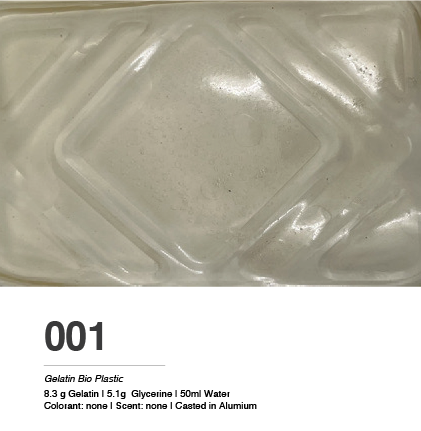

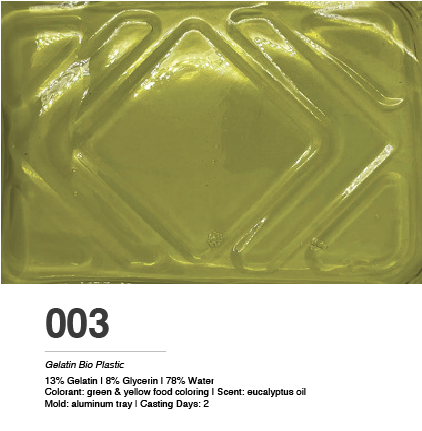
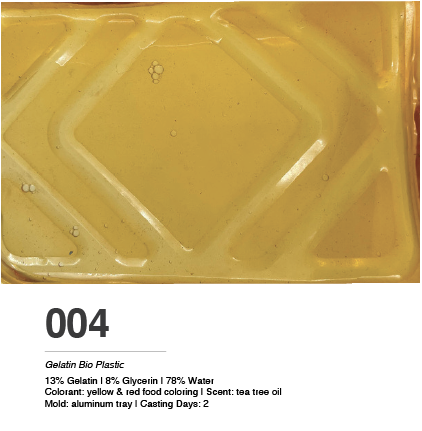

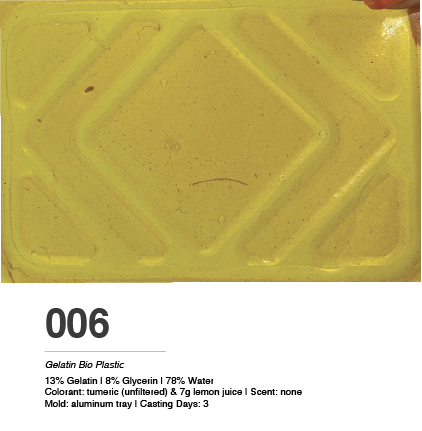
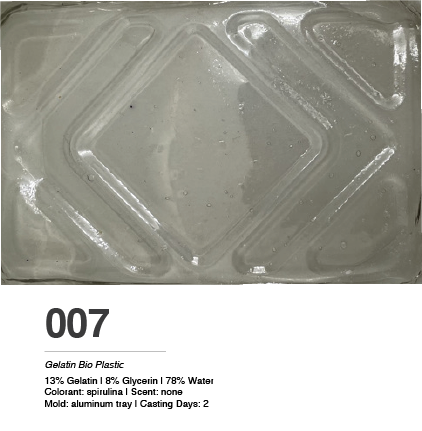
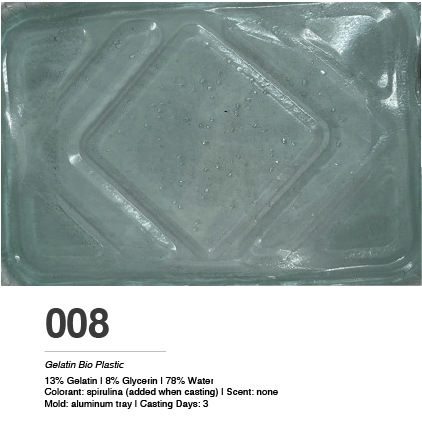
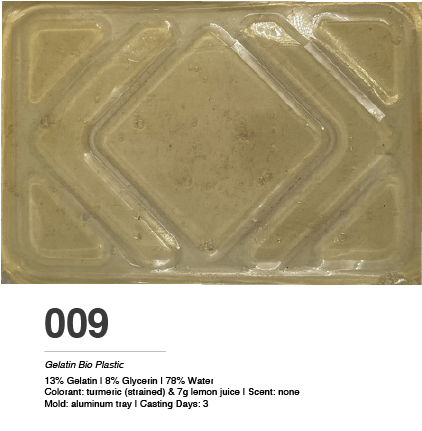
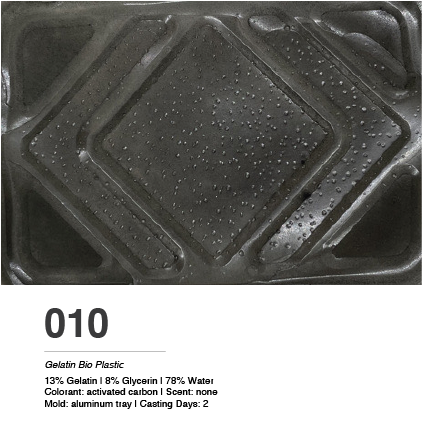
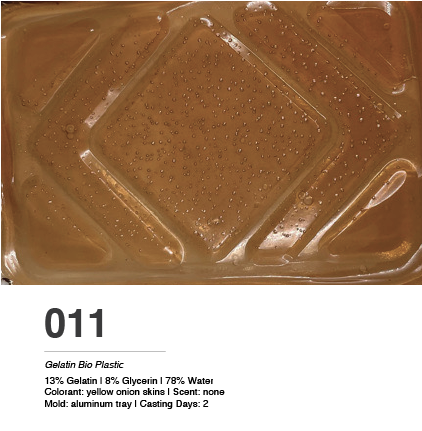

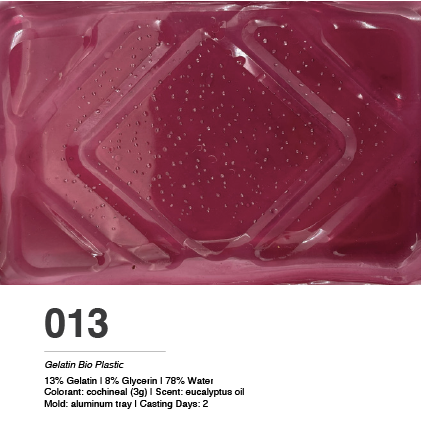
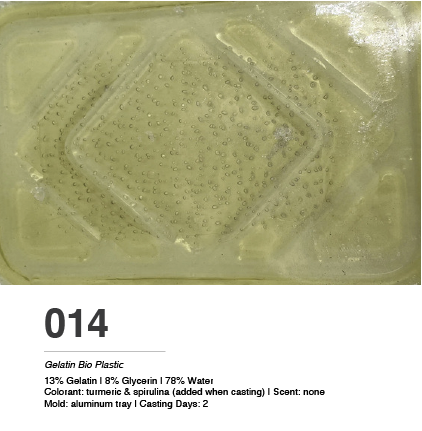
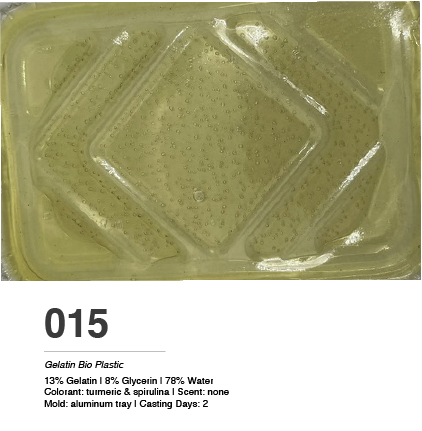
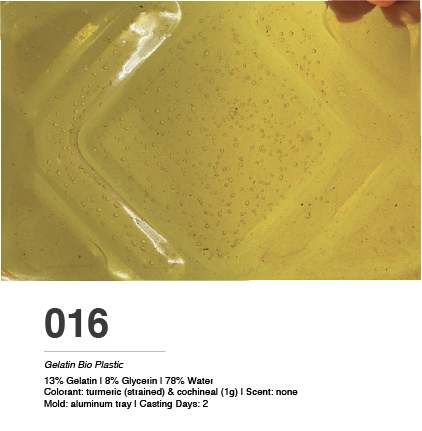
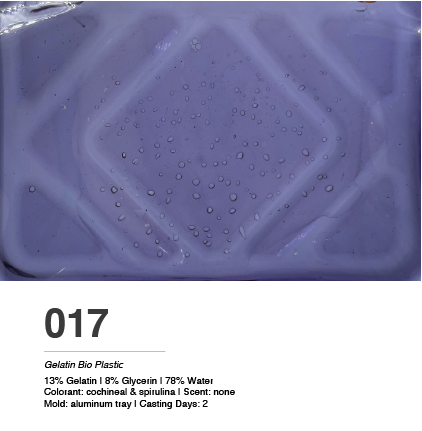
I created this prototype in Illustrator of how my bio plastic library could look.
-
Here is a moodboard of how I want my bioplastic biochrome libarary to look.
-
Here is a resource that Loes Berger put together to help reserchers create a local archive or new materials.
Big Cast¶
After experiementing with the smaller bio plastic pieces I moved on to casting a larger piece of bio plastic. I used a frame we had in the FabLab Barcelona that was glass with a wooden border.
- Dimensions: 745 cm x 850cm x 5 mm
- Volume: 3166.25 ml
- Recipe: 642.9g gelatin (15%), 374.9g glycerine (9%), 3166.25 ml water / dye bath (76%)
- Color: Red and Yellow Food Coloring mixed to make orange
- Casting Days: 5

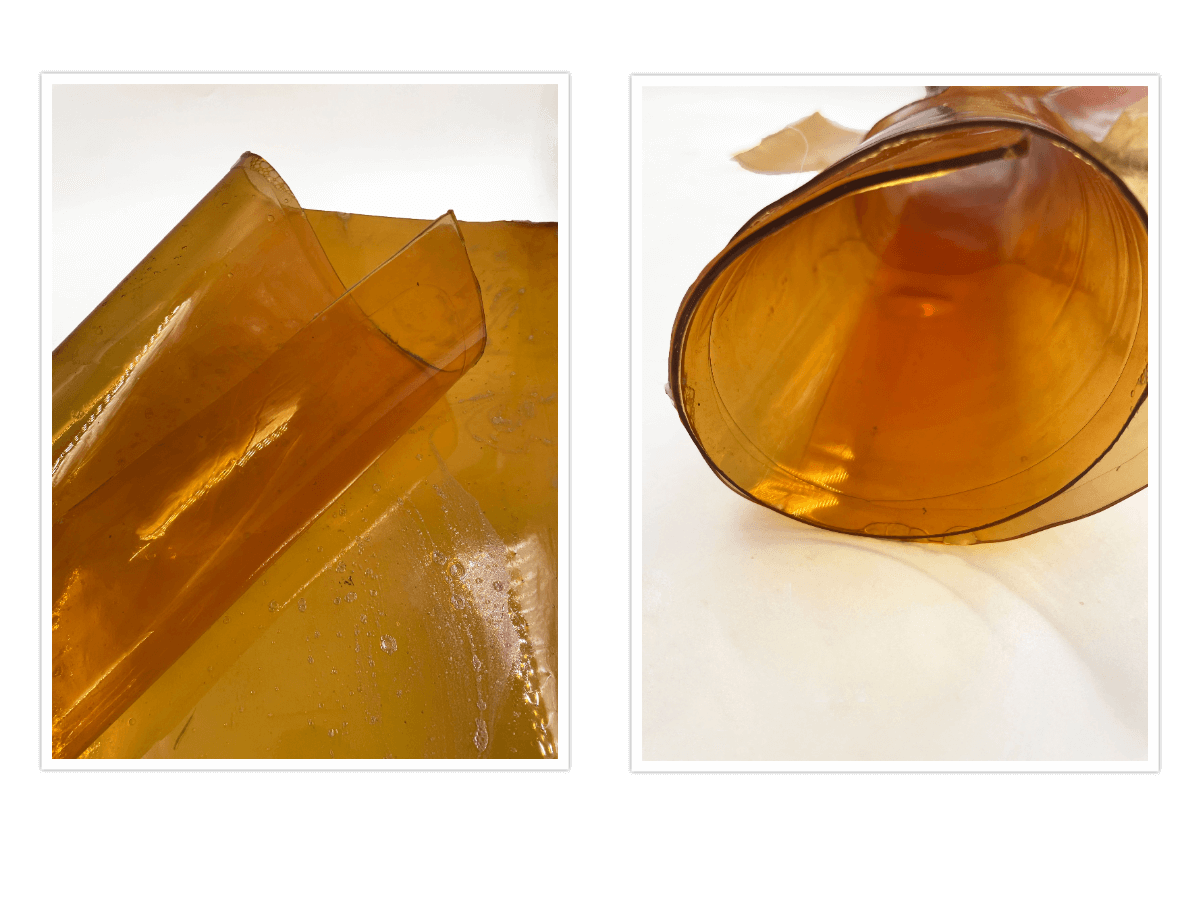
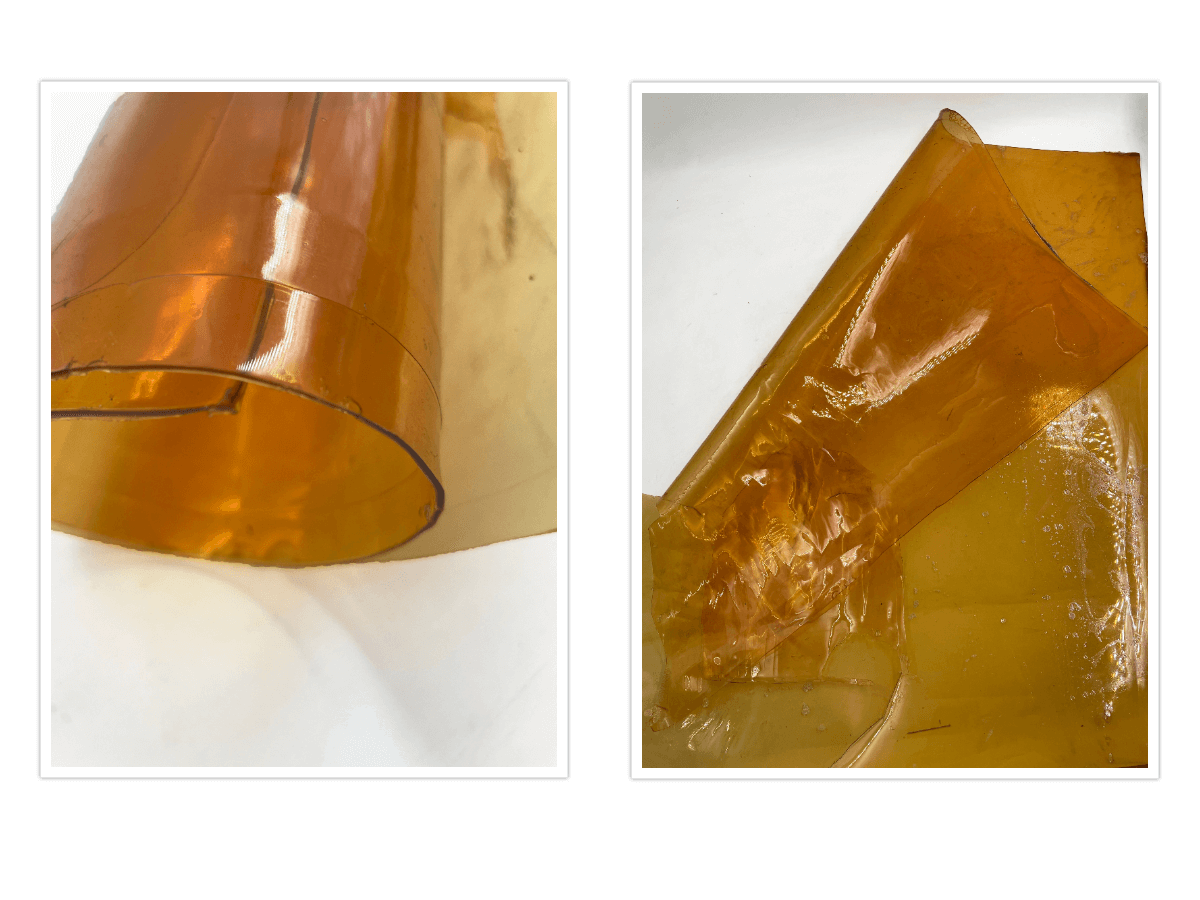
Observations¶
 The paired photos above are of the same bioplastic, the only difference being the light. Observing the samples, the colors look different when held up to the light versus when they are laying flat on a white surface, versus when they are laying on top of skin and different skin tones. The middle pair shows how some bio colors also changed as they dried in the mold.
The paired photos above are of the same bioplastic, the only difference being the light. Observing the samples, the colors look different when held up to the light versus when they are laying flat on a white surface, versus when they are laying on top of skin and different skin tones. The middle pair shows how some bio colors also changed as they dried in the mold.

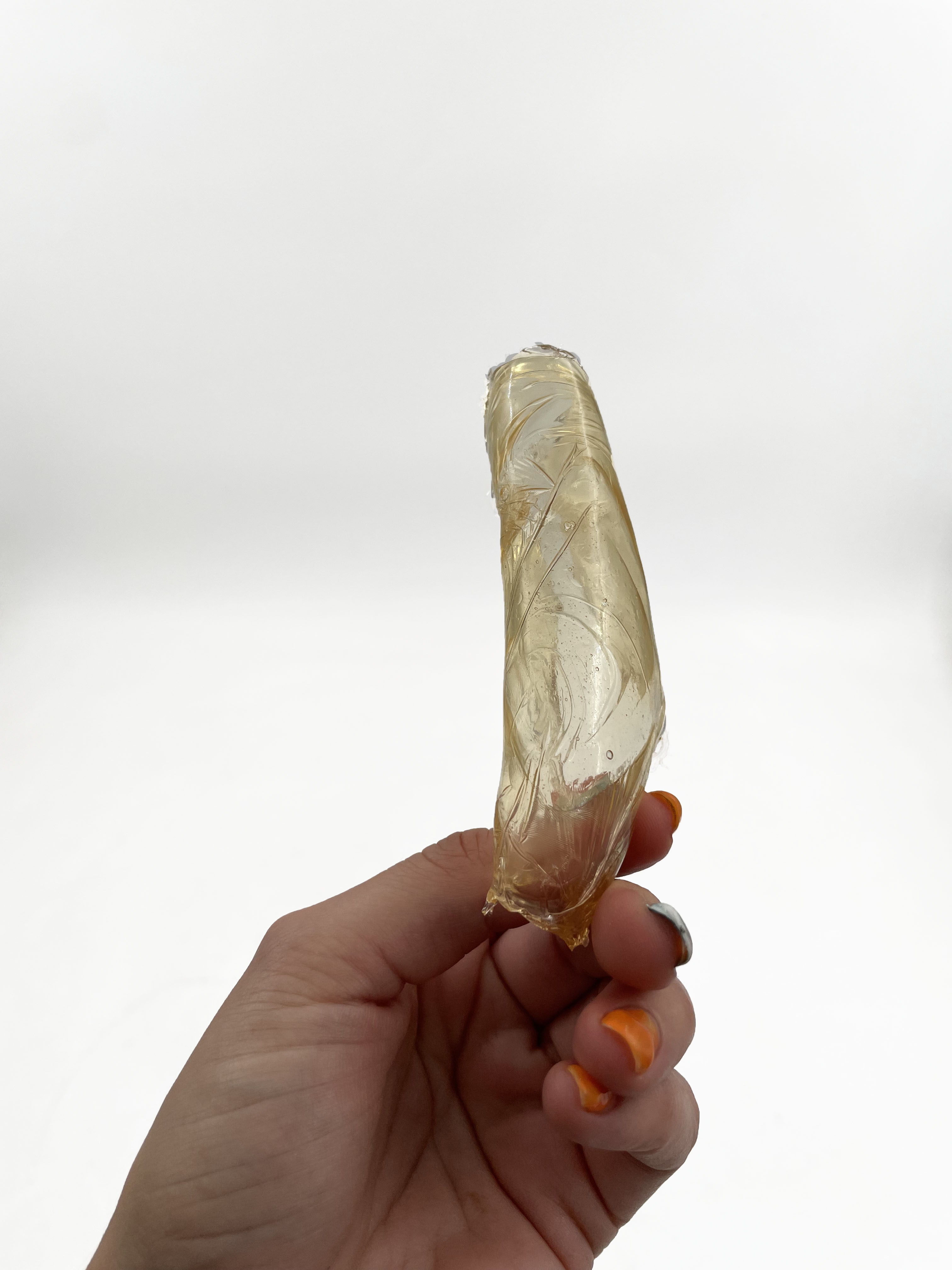
Photos of my first failure. This piece was casted on plastic film layered on top of the aluminum tray I used. It started curling up after the first day of casting.
 Even though I had used a level to make sure the mold was even, the bio plastic casted thicker on one side and very thin on the other. The piece was ultimately hard to remove after 5 days, particularly the side that was thiner. It took 2 of us to remove. Using a heat gun on the glass helped a bit to remove the thinner parts that were very stuck to the glass but too much heat caused the the bio plastic to melt and created holes / rips in the bio plastic. In the end there was a small piece I couldn't remove.
Even though I had used a level to make sure the mold was even, the bio plastic casted thicker on one side and very thin on the other. The piece was ultimately hard to remove after 5 days, particularly the side that was thiner. It took 2 of us to remove. Using a heat gun on the glass helped a bit to remove the thinner parts that were very stuck to the glass but too much heat caused the the bio plastic to melt and created holes / rips in the bio plastic. In the end there was a small piece I couldn't remove.
Ideation & sketches¶
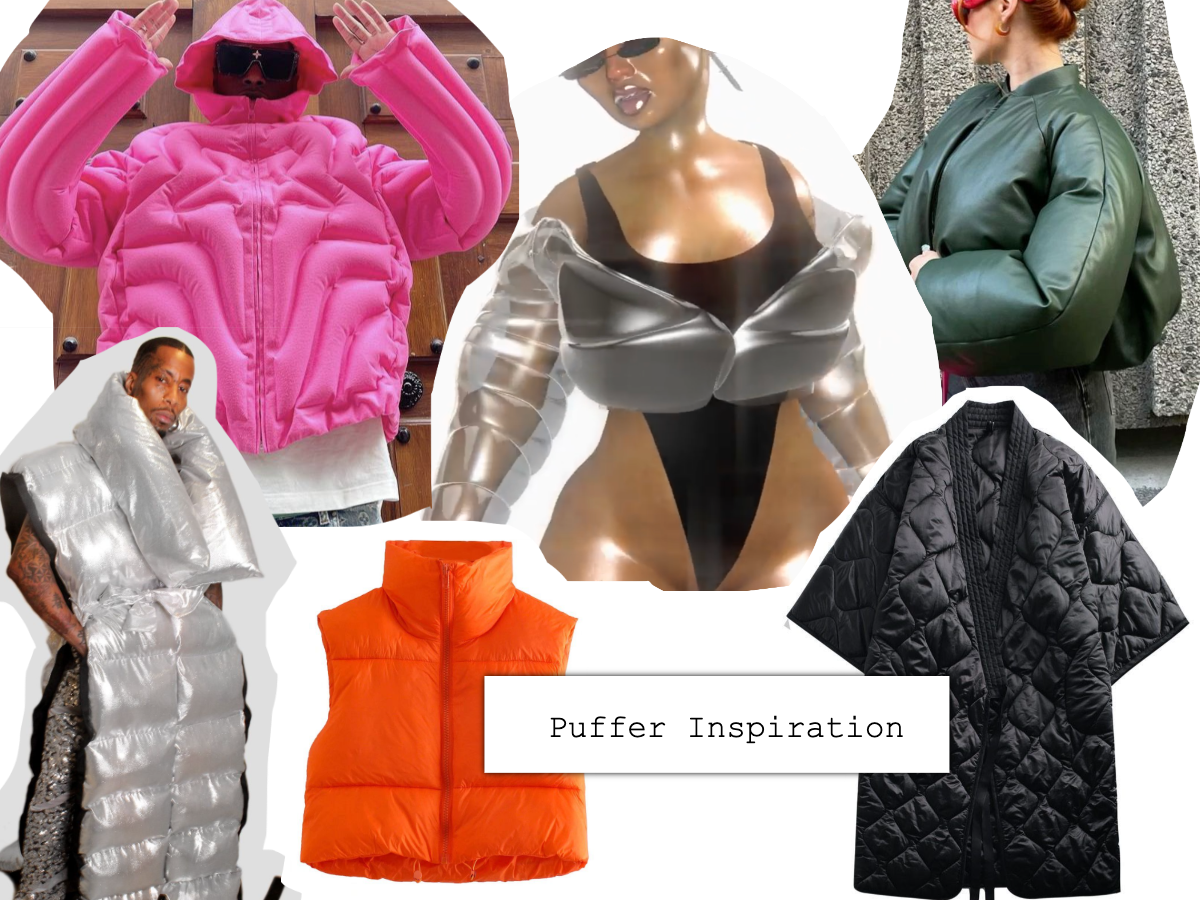
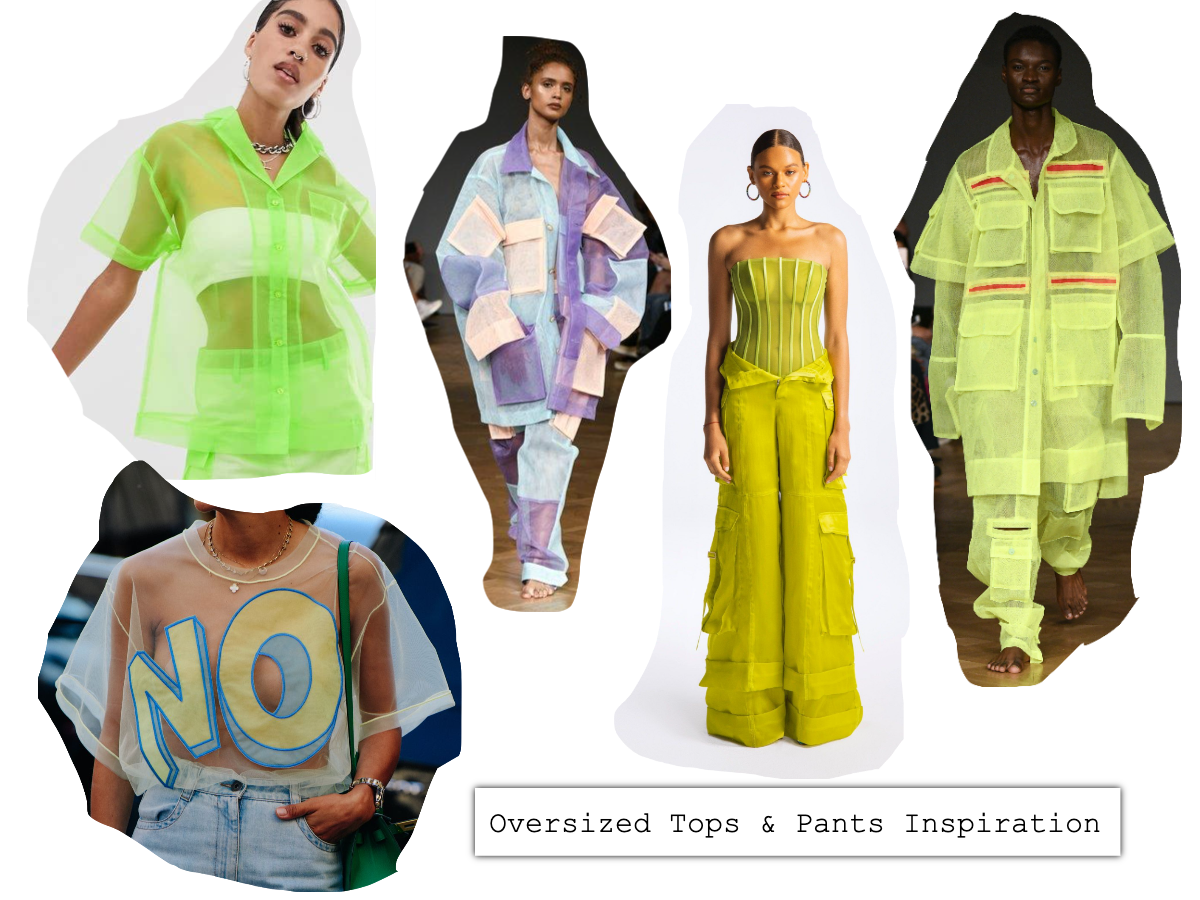
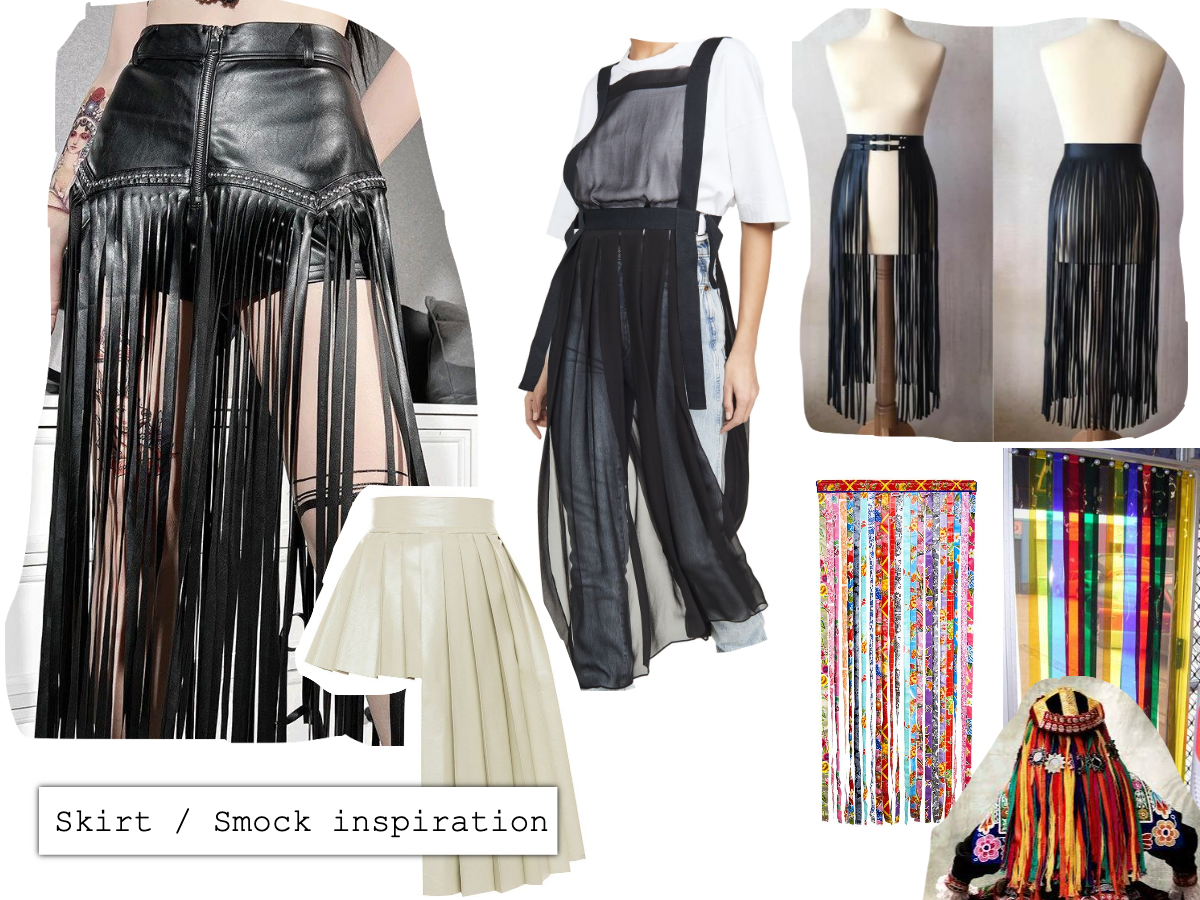
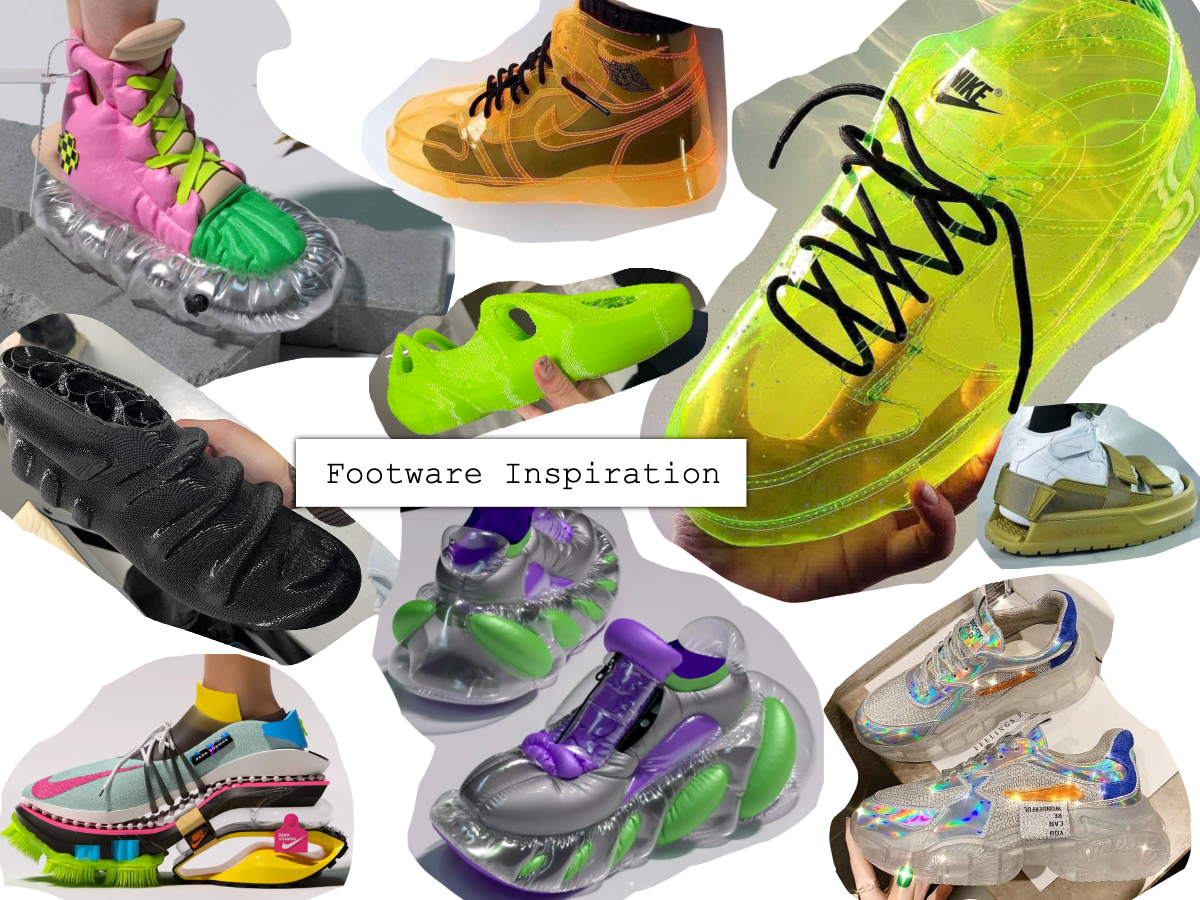
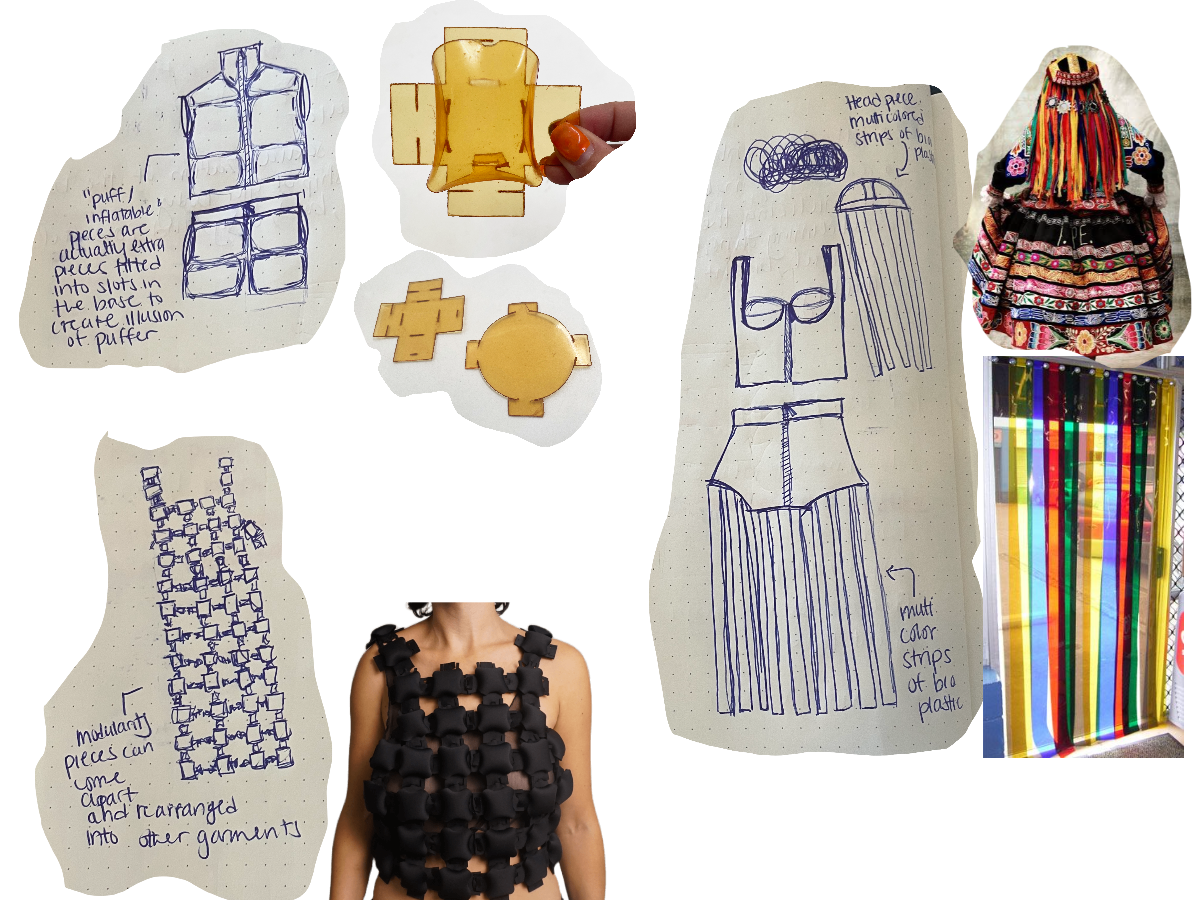
Design & Fabrication¶

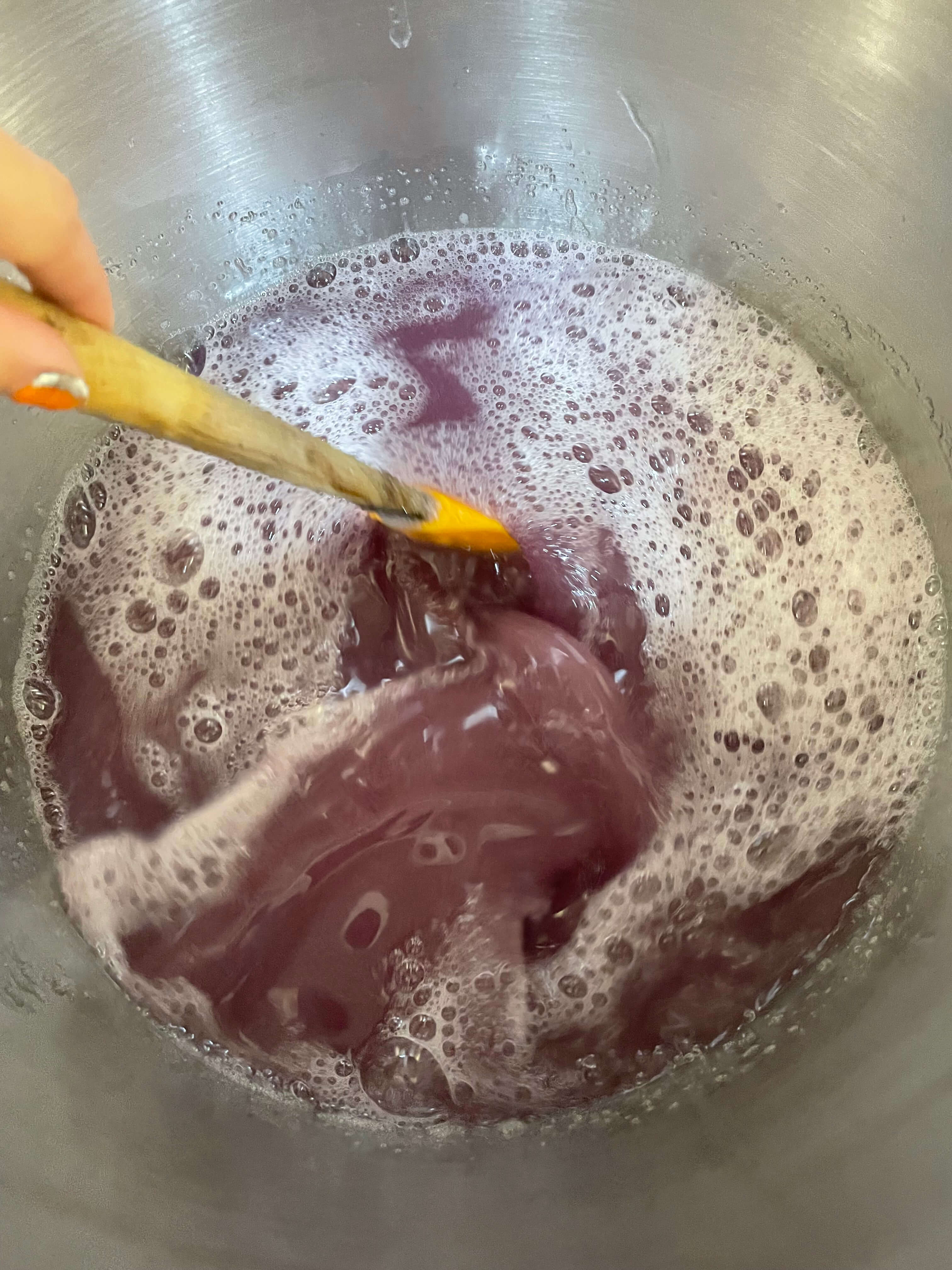



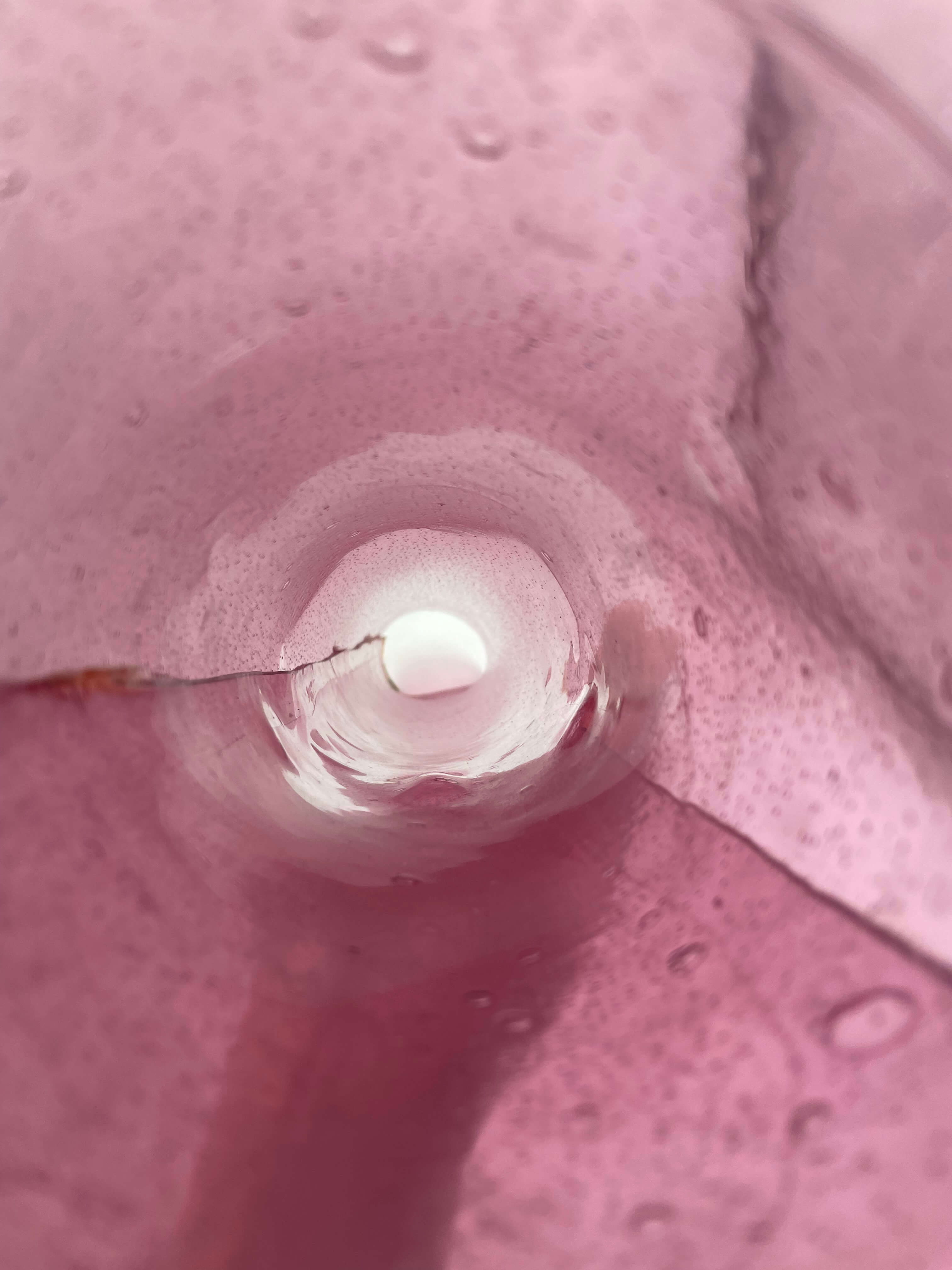


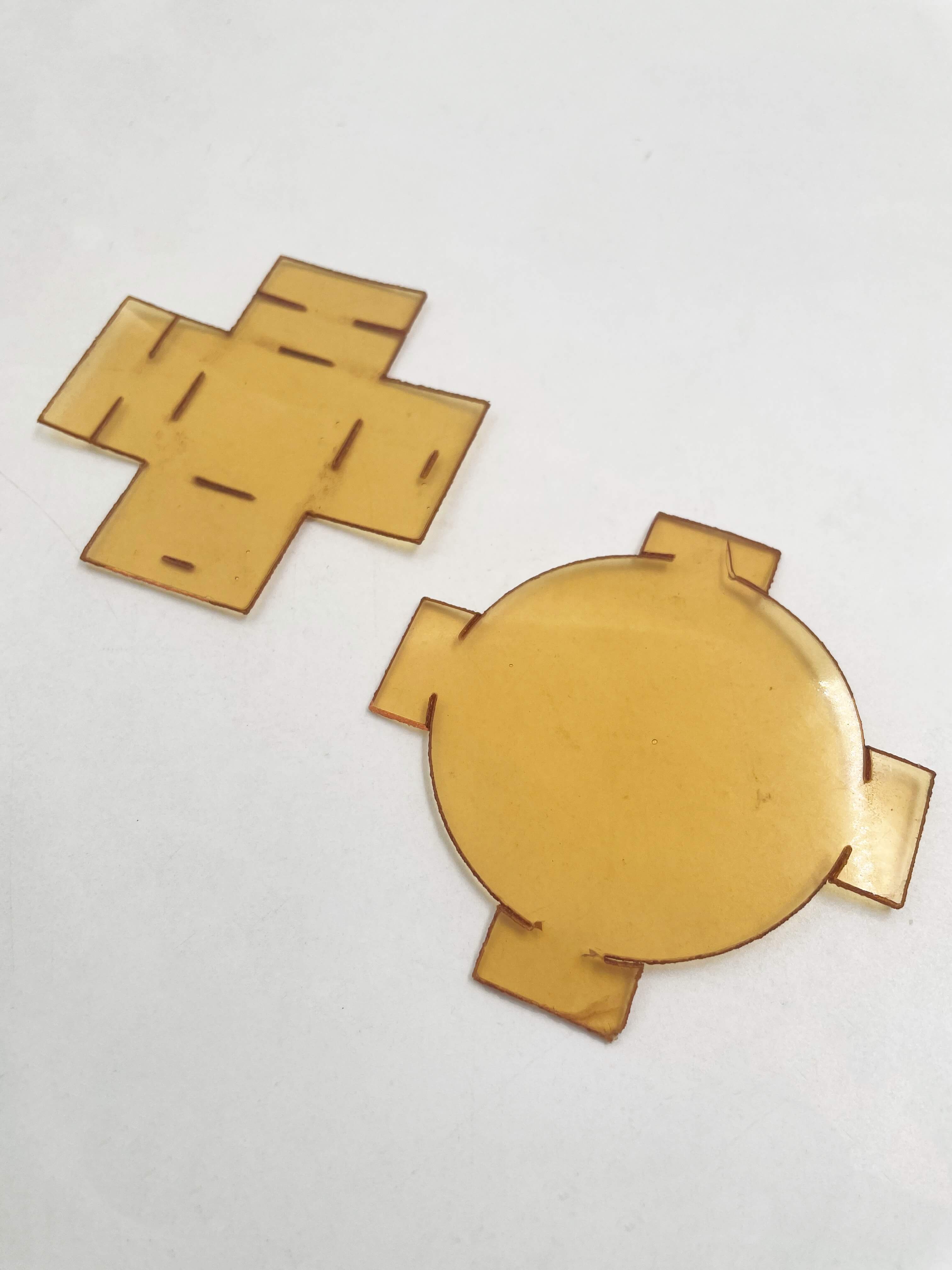

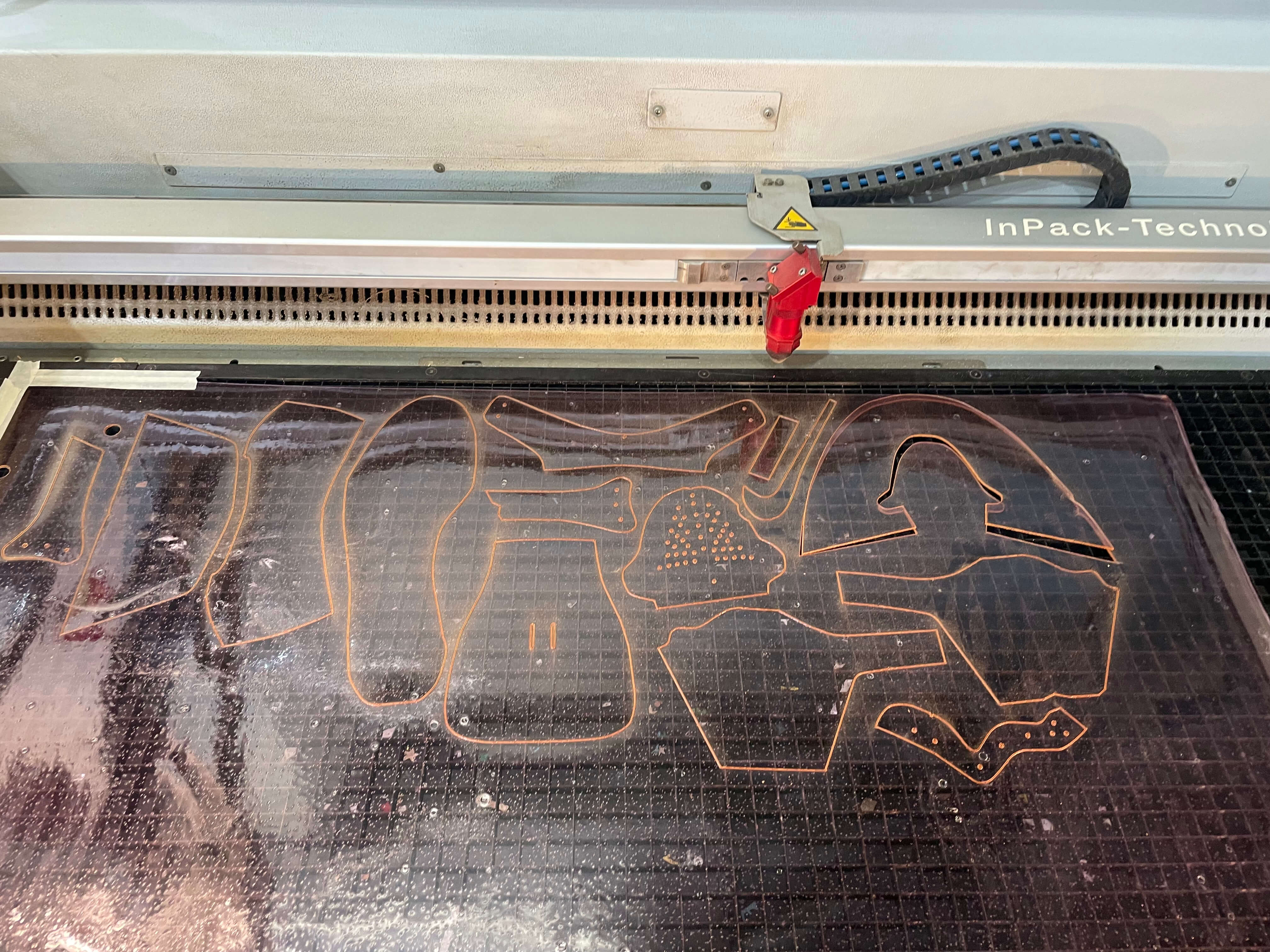
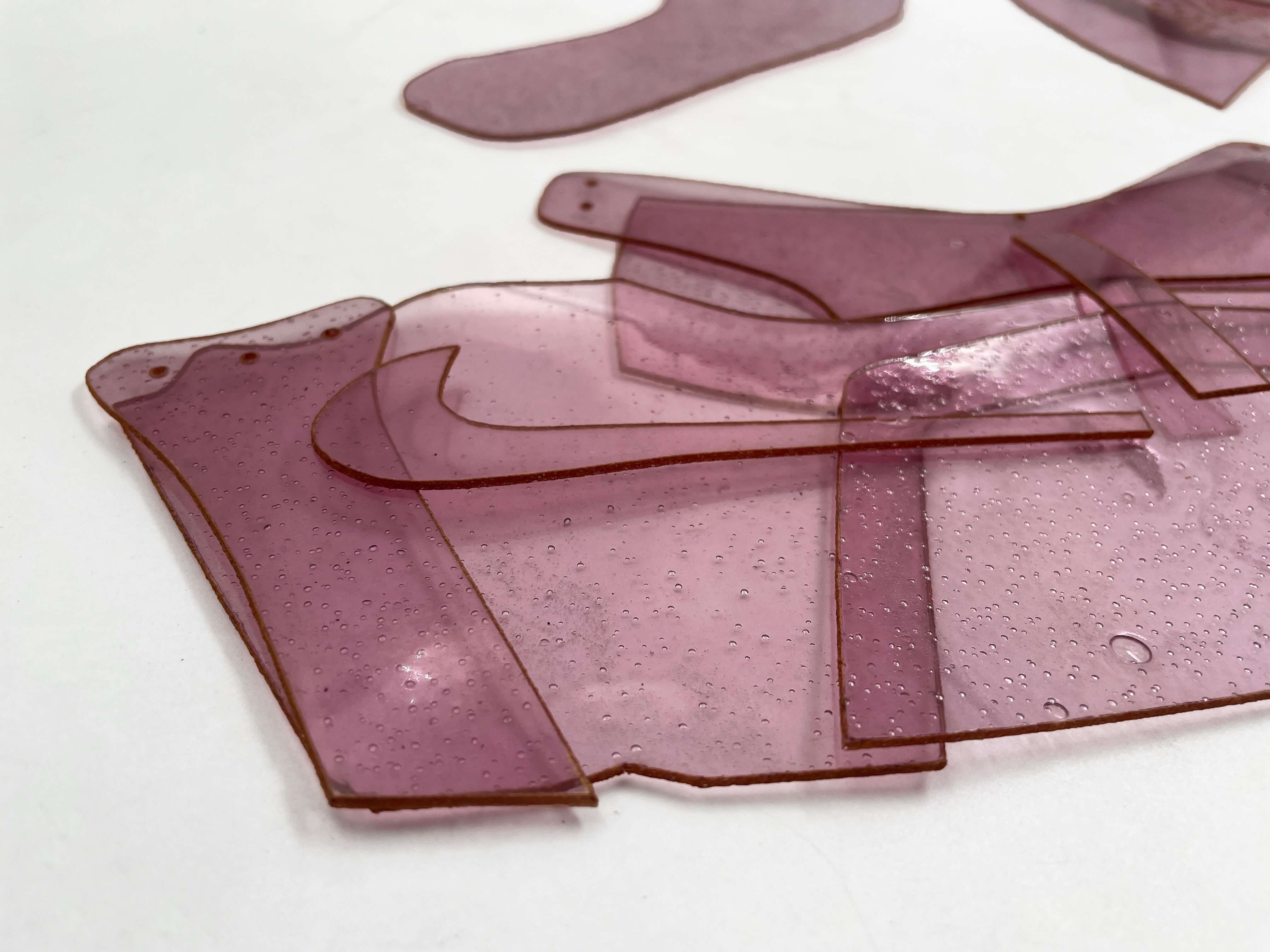
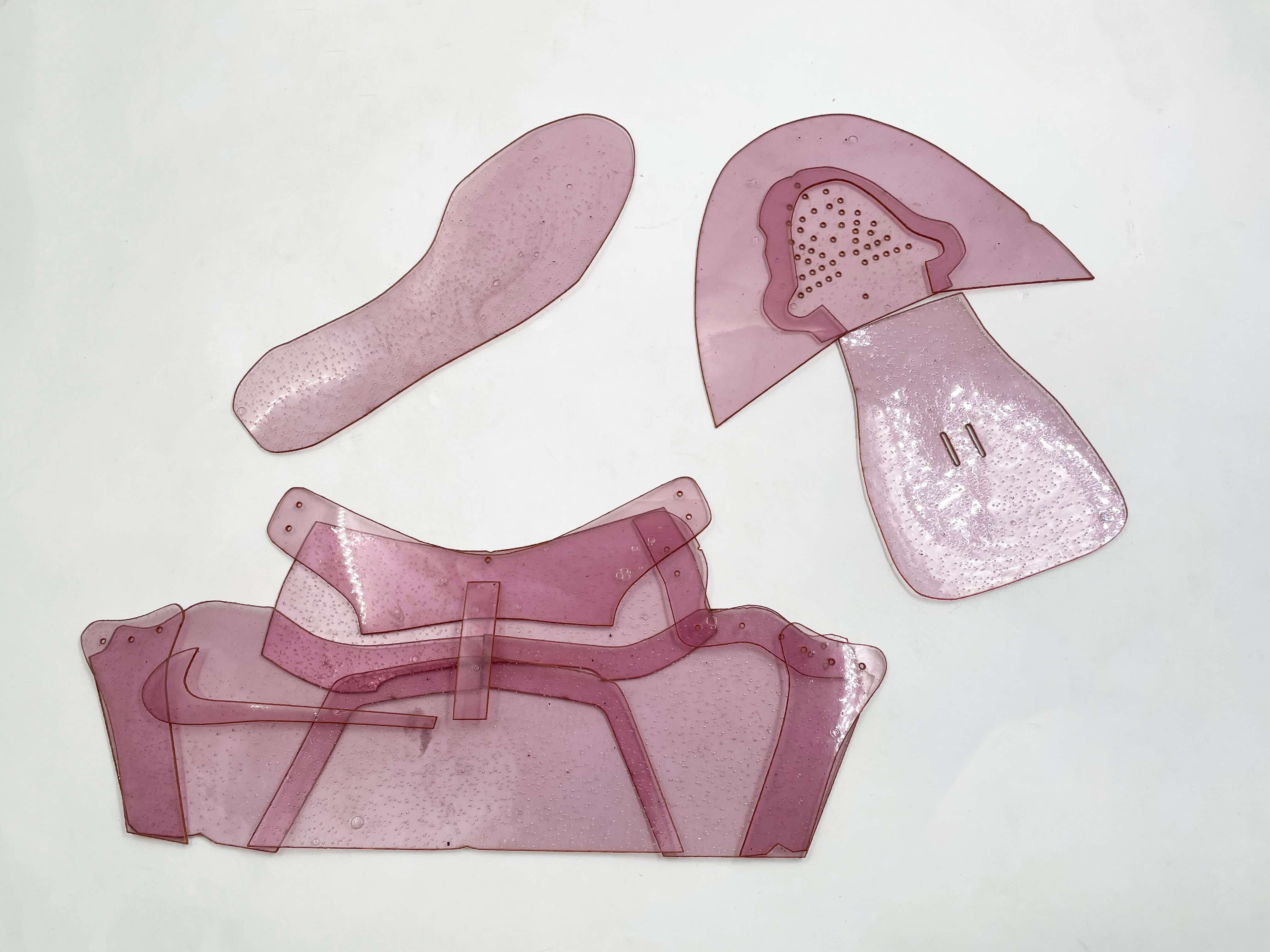
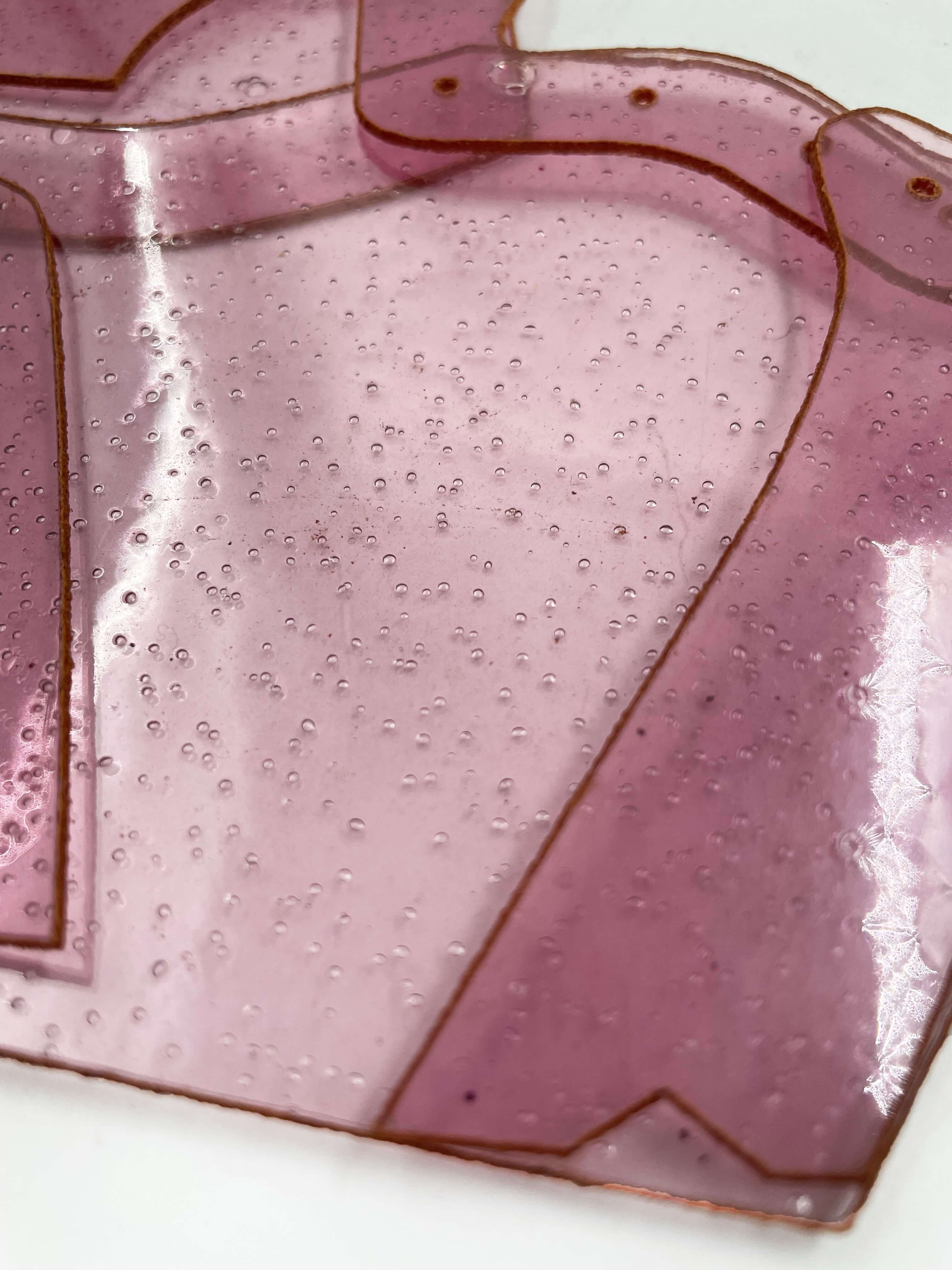
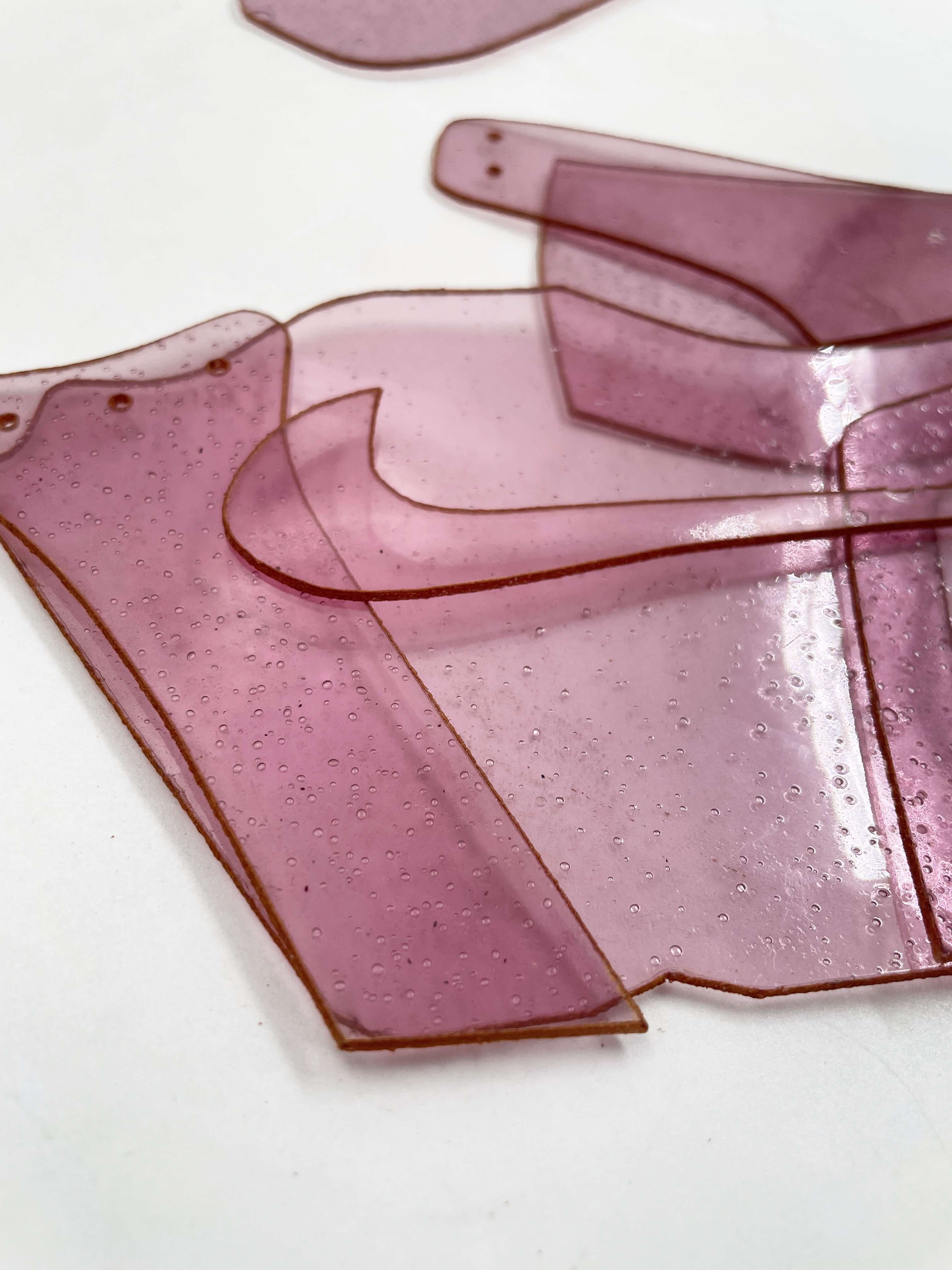
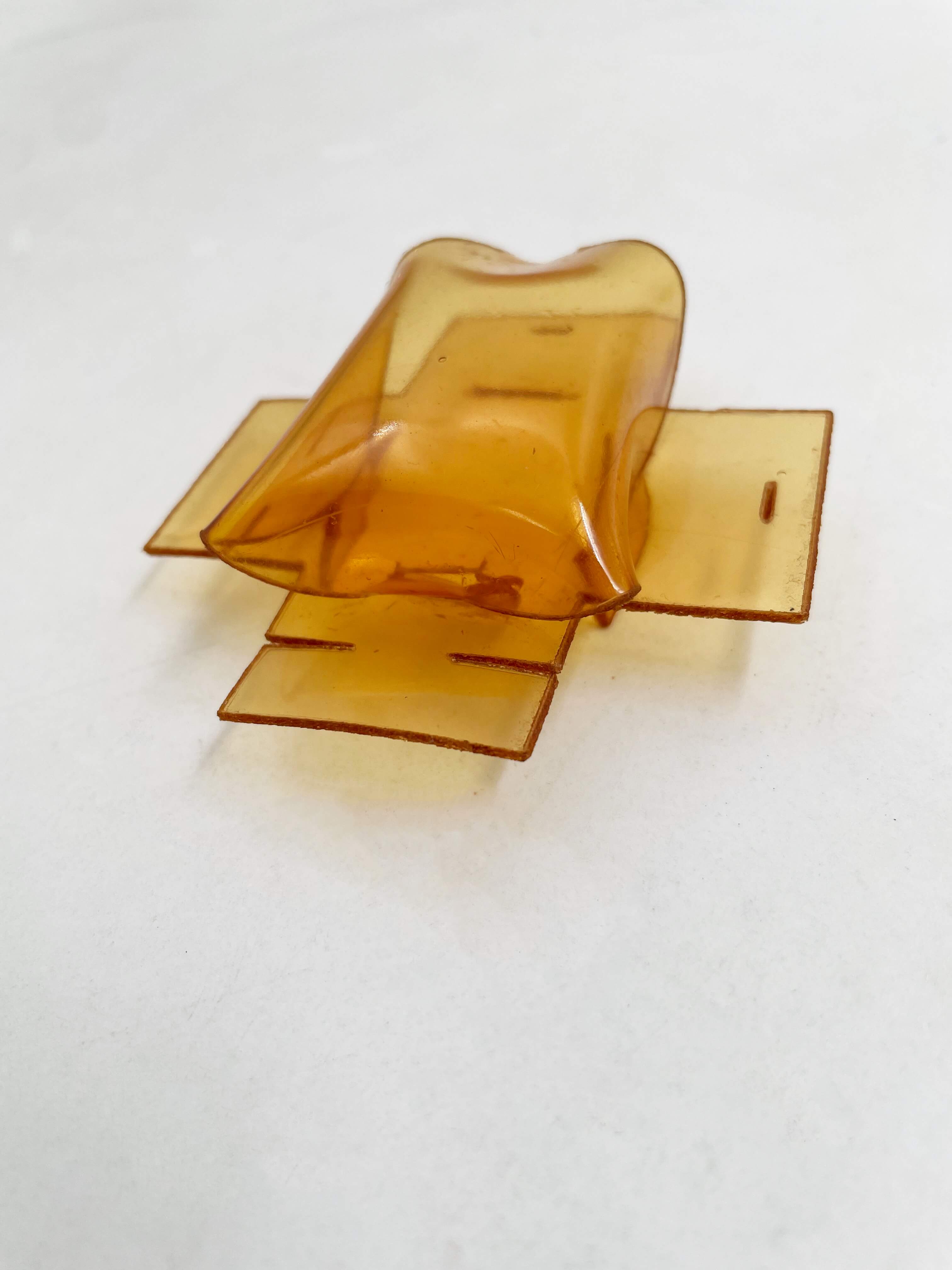




Mentoring notes¶
=== "feedback"
* Feedback from Clara: need a story!
* Cecilia: System graphic, what do you cast how do you cast what colors how do you dissolve it technically for me and for user, life cycle assessment way to measure input and output, measuring idea, design in circles, open lca,
* Petra’s feedback:
* By midterm
* Designs of Garments, we want illustrator, and CLO3D
* Bio Plastic Library:
* Playing with textures: go to estacio serviestacion to get big sheets of textured plastic
* Morning on garments in the morning, afternoon work on the shoe, consider different recipes for parts of shoes.
* Think about shoe vs garments vs nails
* Marce - shoe design
* What should I do with big samples?
* Meeting with Clara tomorrow
* Going to cut vest tomorrow
* Shoe experimentation:
* Casting directly on to last
* Apply heat to mold already made bio plastic sheets
* Goal – How to create a sneaker out of one single piece of bio plastic that can then be customized with modular pieces?
* New manufacturing process depending on capabilities of bio materials.
* 3 techniques:
* putting gelatin all over shoe and cuttng patter on last that I want to make and putting it back to gether after cutting it out.
* Base layer like first technique but then cutting lines for put inserts of extra bio plastic on top like modular vest,
* Cast on last but different parts of shoe at a time and making extra lengths to then interweaves / assemble shoe through interlocking method.
* Nail experiments: take old acrylic nail and paint on top like sneaker.
* Talk to a costume designer. Interview Laci from Tiktok. Catherine Euale, creates costumes for celebrities but for tv series and she did fabricademy. Interview celebrities stylists?
* Single Use Garments for Celebrities.
* Find the correct language
* STORY:
* STUDY CASE
* APPLICATION of the Project Idea
* I am designing garments for celebrities who are edgy, culture makers, trend setters, who are are constantly seen wearing new outfits every time they appear in the public eye.
* Collection piece: the niche of the collection.
* Explain the garments / accessories. Show the sketches / patterns.
* Clara questions:
* Story
* How to best cast on top of shoe, what is the method? What method of gelatin would be ideal for sole of shoe?
* Materials, recipes, methods, colorants, and smell, thickness of materials, taking out gelatin,
* Life cycle assessment
* Dehydrator to dry would be perfect 25 degrees not more than 30.
* If materials sit on acrylic for 7 days in sterile environment it is perfect, don’t have to worry about contamination
* Bubbles: microwave and vacuum
* Essential oil wait until it is 40 degrees then add oil.
* Tapicoa starch test. Don’t cook it in a pot only in the oven. High heat, 230C, 5min. Heat from both sides. A lot of glycerine.
* Smell is probably from contamination
* Gelatin: always check blooms, any gelatin can work as long as it’s 200-330 blooms
* Bacteria doesn’t like plastic. Try to get clean acrylics. Wash first, let dry, then spray with alcohol let dry, then cast.
* Color:
* Check out micas
* Look for non toxic paints and inquire with companies.
* Wait for materials to be fully dry before cutting. Cutting while not fully dry could contaminate the material by letting particles in.
* Shoe: notches on bottom to fold over, consider interlocking method to close shoes.
* Sole: hard foam, electric egg beater, make it really tick, then press it no heat!
* Sewing, universal needle, material that worked best for sewing is bio plastic with a little foam. Try differing stitch size.
* GaBi for life cycle assessment, Open LCA
* Determine which process of degrading
* Brief diagram of all inputs and outputs.
* Anlyze deterioration in soil, look for scientific papers.
* Google Scholars to https://sci-hub.hkvisa.net/, copy and past DOI address of papers.
* Tor browser – internet browser
* Story: Why and how I’m going to be attractive to my target audience. Maybe have another purpose for target.
* Look more into degradation needs and how to tell them to get rid of the things.
* Prepare answers for the negative:
* Why plastic? Its not comforatble
* Their waste at the end?
* Energy used
* Ew gelatin?
* How are materials sourced?
* How would I get people to buy this?
* (glycerol: fat or oil)
* Shoes:
* CNC the sole with the plastic
* Or 3D print
* Or for laser cut acrylic mold, we could cut both shoes